3rd May.
After taking local advice on timings for entry to Scapa Flow to avoid being swept into the Pentland Firth we left Wick in time to reach Duncansby Head at slack water. Spot on 1100 as the tide grew slack we encountered this notorious area of water. The swell and waves gradually built and instead of calming down the sea turned into a maelstrom of rough unpredictable water with waves coming at us from all directions. This was not what we had planned! Our sails reefed for the wind conditions did not stop us broaching a couple of times as we ploughed our way round the head, about 3 miles off as advised. Thankfully we passed the Pentland Skerries with room to spare and entered the relatively calmer waters off South Ronaldsay, picking up the north going current as expected. We shot up into the calm of Scapa Flow and enjoyed a cracking sail up past Flotta into Huxa Sound avoiding the dive boats and beautifully named set of rocks, The Barrel of Butter. It was so named because the residents of Orphir paid the local laird a barrel of butter each year to allow them to hunt the seals on the shore. I’m not sure that is still the case today.
Following the buoyed channel into Stromness we thankfully tied up alongside on the ponton at about 1730. A long day but a good one. We did find out later that the waters off Duncansby are often unpredictable, do not conform to the norms and can provide a rather more turbulent passage than anticipated. Everyday’s a learning day!
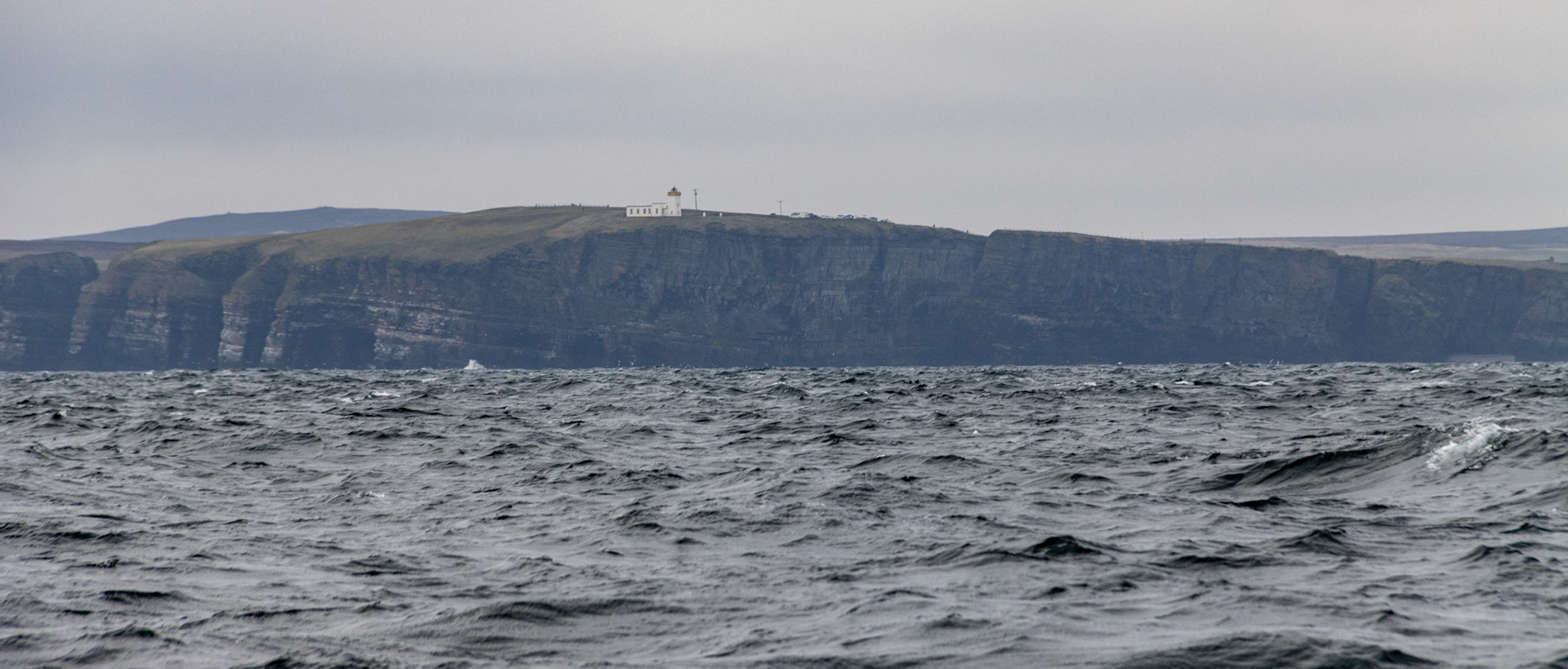
Duncansby Head
ORKNEY
There is so much to see, do and write about in Orkney, its amazing ancient and modern history, its fantastic geology, its people and its influence and place in the days gone by and the innovative technologies it is developing for renewable energy. Our stay of 17 days was simply not long enough to do it justice.
Orkney’s coastline is around 600 miles and it abounds with wildlife, sealife, and a rich array of wild flowers and grasses. We saw Oystercatchers, who seem to enjoy the worms on farmed land, redshanks, Eider ducks, puffins, gannets, razorbill and guillemots. There were also a fair number of Arctic Skuas, large aggressive birds that not only attack other birds, steal their food and menace the skies but are known to attack hillwalkers who get too close to their nests! There is one little rodent specific to Orkney known as the Orkney vole who has the temerity to hunt in daylight but so often becomes prey for harriers, kestrels, merlin and short-eared owls. A larger threat to the obliging little native vole is stoats, somehow introduced to the islands but there is now a project to capture and eliminate the stoats so they do not overrun the islands.
Arriving in the lovely safe harbour of Stromness I was very conscious of the beautiful stark and simple song written by Peter Maxwell Davies, Farewell to Stromness. Thankfully the uranium mine he was protesting about was never opened. It is such a poignant reminder that the stunning natural beauty and culture of a place can be so easily destroyed by our greed and desire for transient modern demands.
In the cold and windy days we spent in Stromness we walked a good few miles and visited Skara Brae, the well-preserved and managed ancient (5,000-year-old) site of huge archaeological significance. It predates Stonehenge and all the surrounding Standing Stones, like the Ring of Brodgar, pay homage to a civilisation we can only guess at. There is no known reason why the site, which they reckon was a village for about 600 years was eventually abandoned although there are a few interesting theories. Although you cannot get inside the village now and can only look from the top the reconstruction of the inside of one of the houses gives a real sense of the type of living those ancients had. The recently found Ness of Brodgar was not open so we didn’t visit there but on other islands, similar evidence of ancient lives and living can be seen and touched.
The museums on all the islands tell of the history of the use of Scapa Flow as a naval base during both world wars and of the relationship between the discovery of oil in the north sea and the subsequent need to bring it ashore to refine and ship out. The Flotta oil terminal is a major crude oil reception, processing, storage and export facility on the island of Flotta in the Southern part of Scapa Flow. It receives and processes crude oil delivered by a subsea pipeline from The Piper, Claymore, Tartan and Golden Eagle platforms and associated fields. The terminal includes facilities for exporting stabilised crude oil (and formerly liquefied petroleum gases) by tanker. Again a reminder of our ever-growing need for fuel and energy. It provided huge opportunities for employment on the islands and encouraged the growth of villages with schools and libraries and community centres for both the Orcadians and all the incomers. Although reduced in capacity now it still provides jobs for many islanders and keeps the ferries and essential communications between the islands strong.


A visit to Mainland is not complete until the heritage and ancient history of the island has been seen and investigated. The Stromness museum situated along a narrow cobbled street heading west out of Stromness is an absolute delight to visit. A ticket can last for up to 7 days and you can revisit as many times as you wish…for just £6 per head. It provides a great introduction to some of Orkney’s famous sons and daughters; Dr John Rae (Arctic explorer who discovered the final leg of the North West Passage and found the final resting place of Sir John Franklin’s failed Arctic Exploration); Sir John Franklin and Dr William Balfour Baikie, and other famous explorers; James Copland prolific medical writer and doctor; Stanley Cursiter CBE FRSE FRIAS FEIS RSA RSW was an Orcadian artist who played an important role in introducing Post-impressionism and Futurism to Scotland. He served as the keeper, then director, of the National Galleries of Scotland, and as HM Limner and Painter in Scotland. Isobel Gunn, the only woman to join the Hudson Bay Company, albeit disguised as a man earning £8 per year hauling furs and provisions to far flung places across the northern territories and Canada. She was eventually rumbled when she unexpectedly gave birth in the factors office and was sent home to Orkney in disgrace. It would not have been much of a homecoming for her and not much is known of her final resting place or the life of her son.

Unusual rockbed
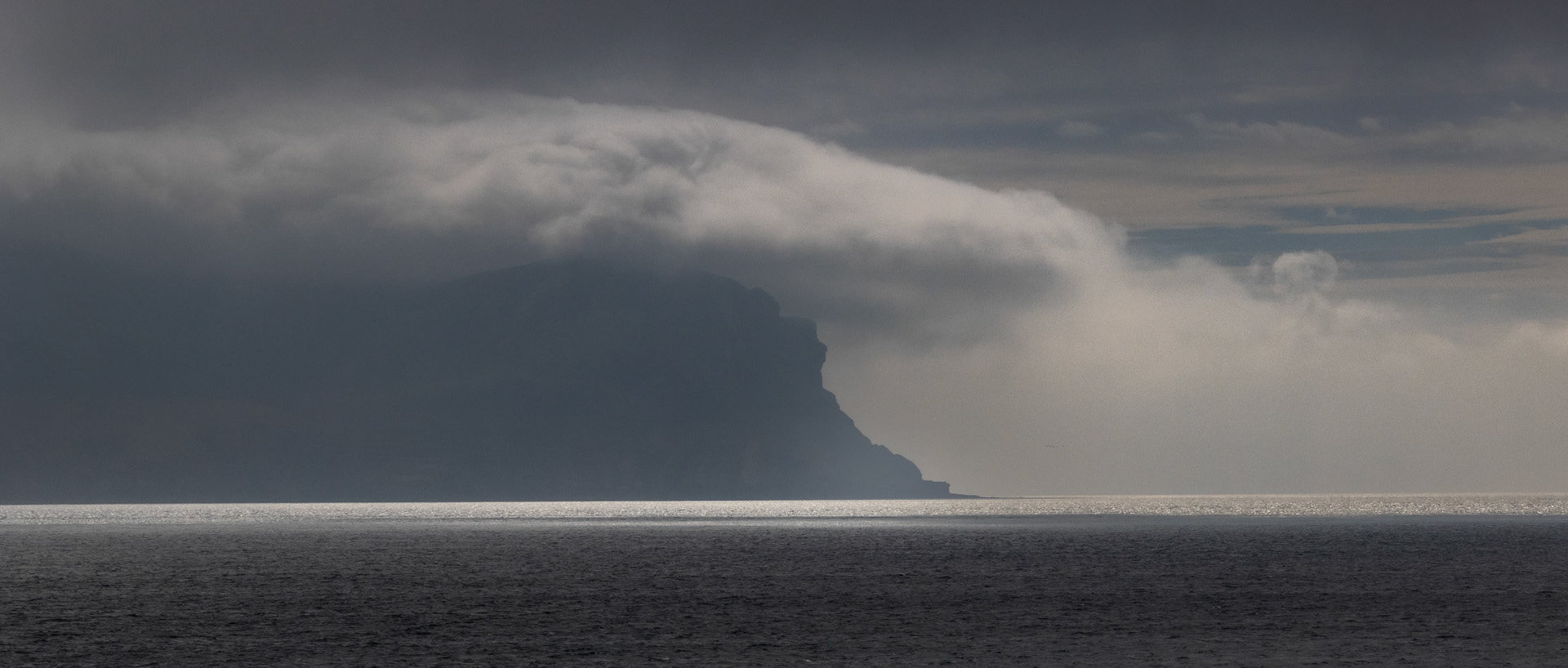
Sultry old man of hoy
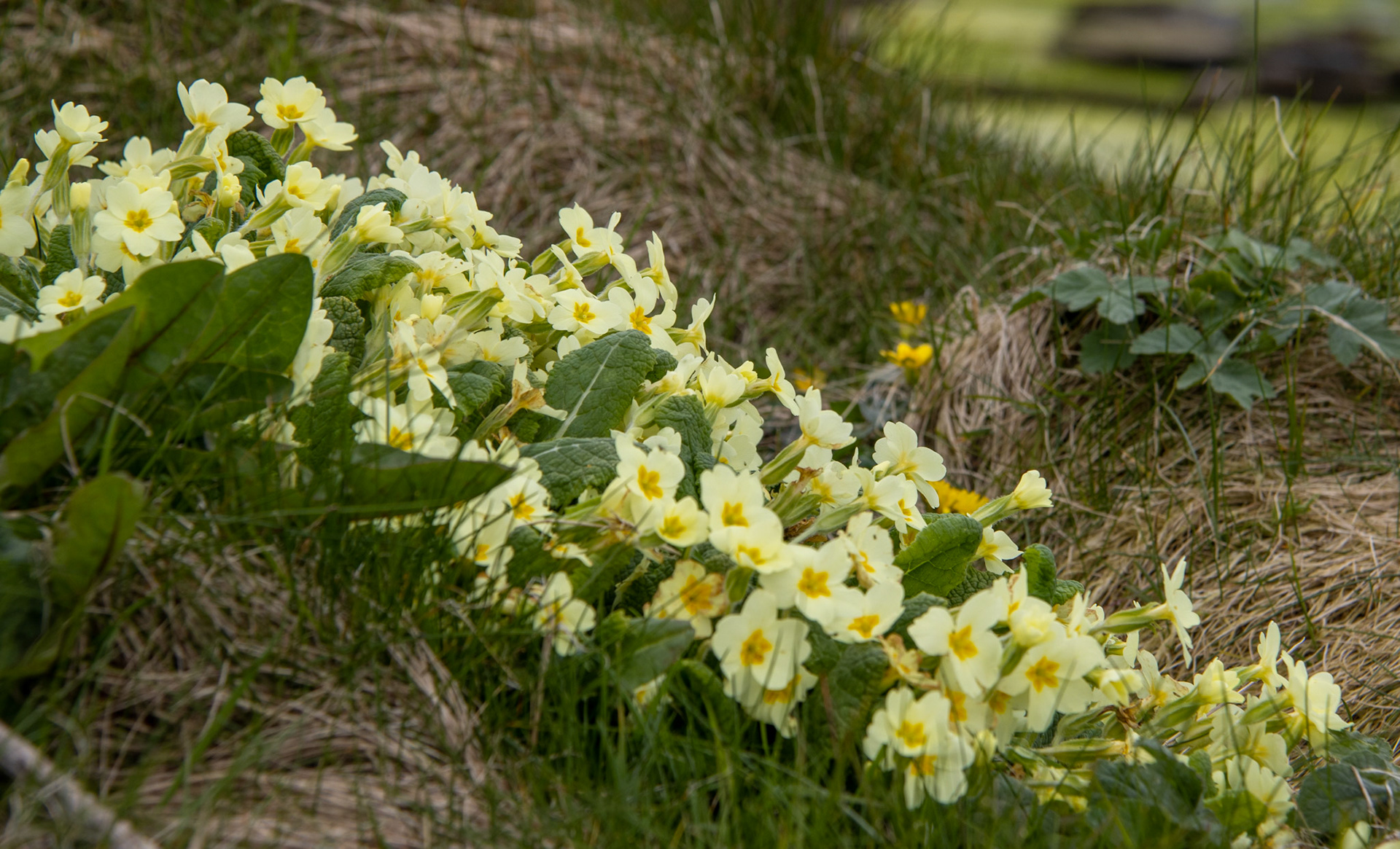
hiding from the biting winds


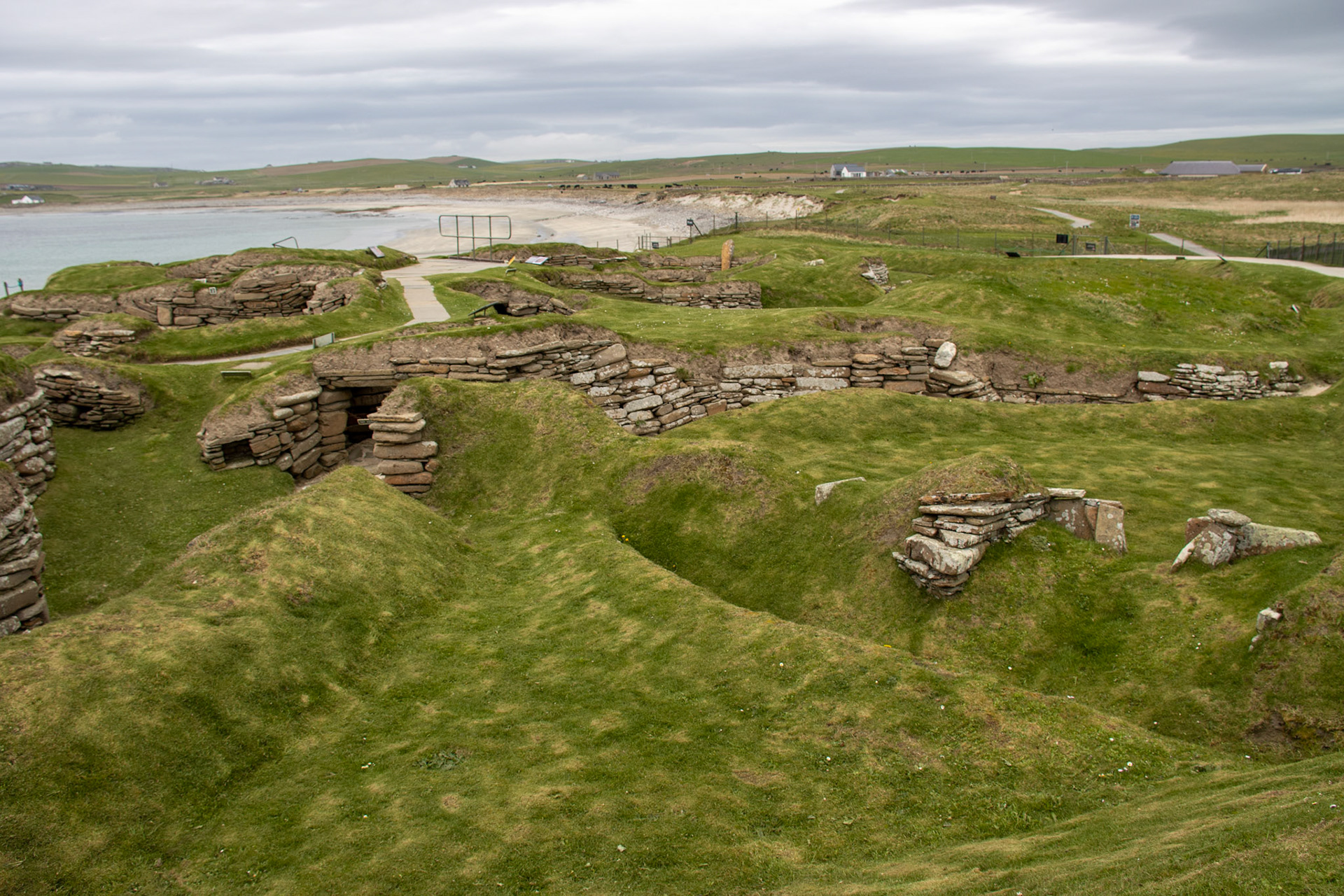
skara brae
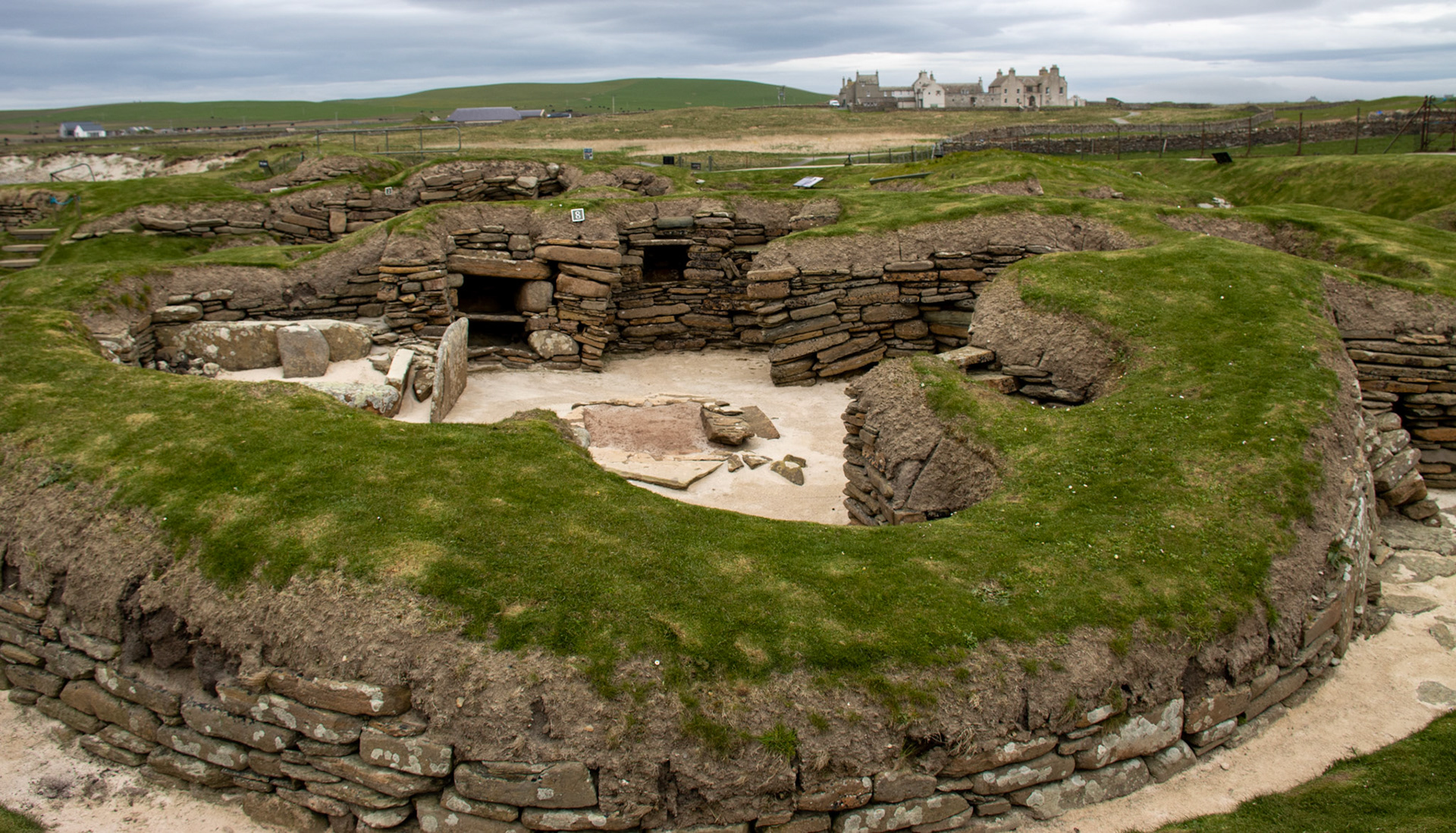
skara brae
Our first visit to Stromness ended when we decided to head north to Westray, an island to the north of Orkney many folk had advised we should not miss. Leaving Stromness we headed up through the Sound of Hoy, and encountered our first example of the infamous Roosts. Although we had planned to catch the end of the south east going flood and the few moments of slack before catching the north west going ebb to enable us to catch the incoming tides past the islands of Eynhallow and Rousay we missed our best position in the Sound and bobbed around, on, between and through the beginnings of the rather unpleasant overfalls. There was no wind, thankfully so we did not suffer wind over tide. However a good lesson was learnt and in future we listened to the sound experience based advice of other yachties who knew the area well before thinking we knew better! The fog came down and we completely missed the sight of Brough Head and its wildlife until well passed the northern end of Mainland and bombing down through Eynhallow sound at a cool 10kts.
We moored off the south side of Shapinsay on one of the visitors moorings enjoying the peace of the evening and watching the otters and seals fishing and resting on the edge of the island. Next day took us to Kirkwall to take delivery of Nick’s computer and to meet the wonderfully helpful Mike Cooper who heads up the Orkney Marinas Company. An absolute font of knowledge and interesting stories we could have spent hours with him but we had to go ashore and stock up for our trip to Westray on 11 May. This was a pleasant motor sail to begin with and then as we headed through Rapness Sound the gap between Westray and Eday we enjoyed a wonderful sail for the last hour watching the puffins and guillomots fish and dive around us.


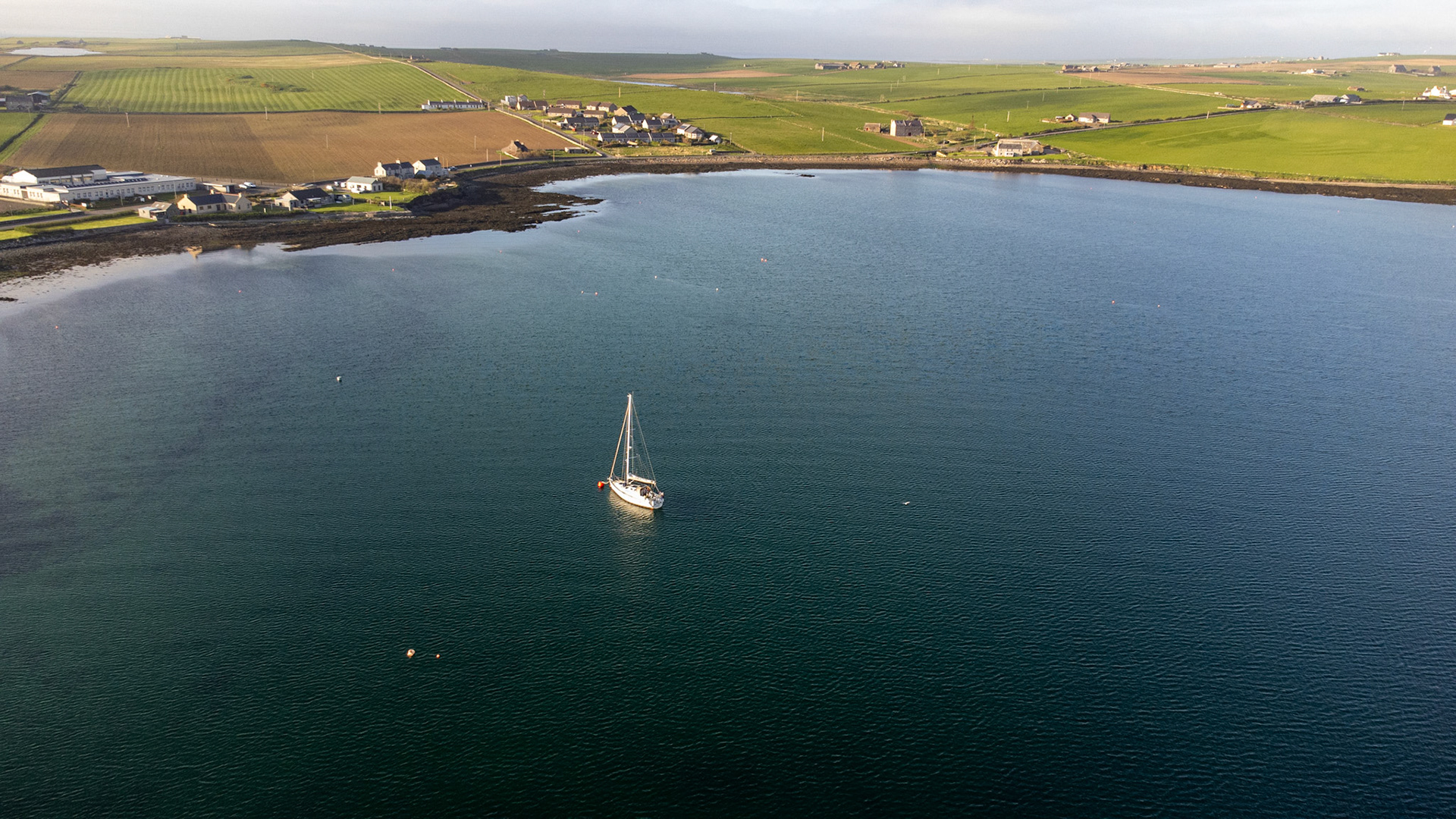
Again in Westray in Pierowall harbour we used a visitors mooring buoy and were delighted to be the only yacht in the whole bay with a Caribbean beach and gently moving turquoise waters all to ourselves (Could have been something to do with the temperatures (8-9 degrees!)) We took a walk up to Noltland Castle and visited the Neolithic and bronze age sites and in the welcome sunshine took a good long leg stretch out to Noup Head the next day with a picnic lunch giving us the chance to see the nesting ledges of the Gannet colony and many other sea birds. There was a distinct tang to the air that suggested a densely populated bird colony! The scenery was stunning and the sea clear and blue. On the horizon was Iceland……no I do not need to visit!
Westray also has a golf course, rather challenging in the windy conditions and boasts the longest hole in UK and Ireland at 736 yds, a par 6. It also has the shortest flight at 96 seconds to the little island of Papa Westray off the east coast.
After 3 days we returned to Stromness with a good wind and as we headed through Rapness Sound we were followed by a basking shark. Humming the obvious tune but keeping a very close eye on him we did not come to any harm but felt so privileged to be in the same waters as this giant natural predator.
Westray also has a golf course, rather challenging in the windy conditions and boasts the longest hole in UK and Ireland at 736 yds, a par 6. It also has the shortest flight at 96 seconds to the little island of Papa Westray off the east coast.
After 3 days we returned to Stromness with a good wind and as we headed through Rapness Sound we were followed by a basking shark. Humming the obvious tune but keeping a very close eye on him we did not come to any harm but felt so privileged to be in the same waters as this giant natural predator.

Pierowall from the mooring
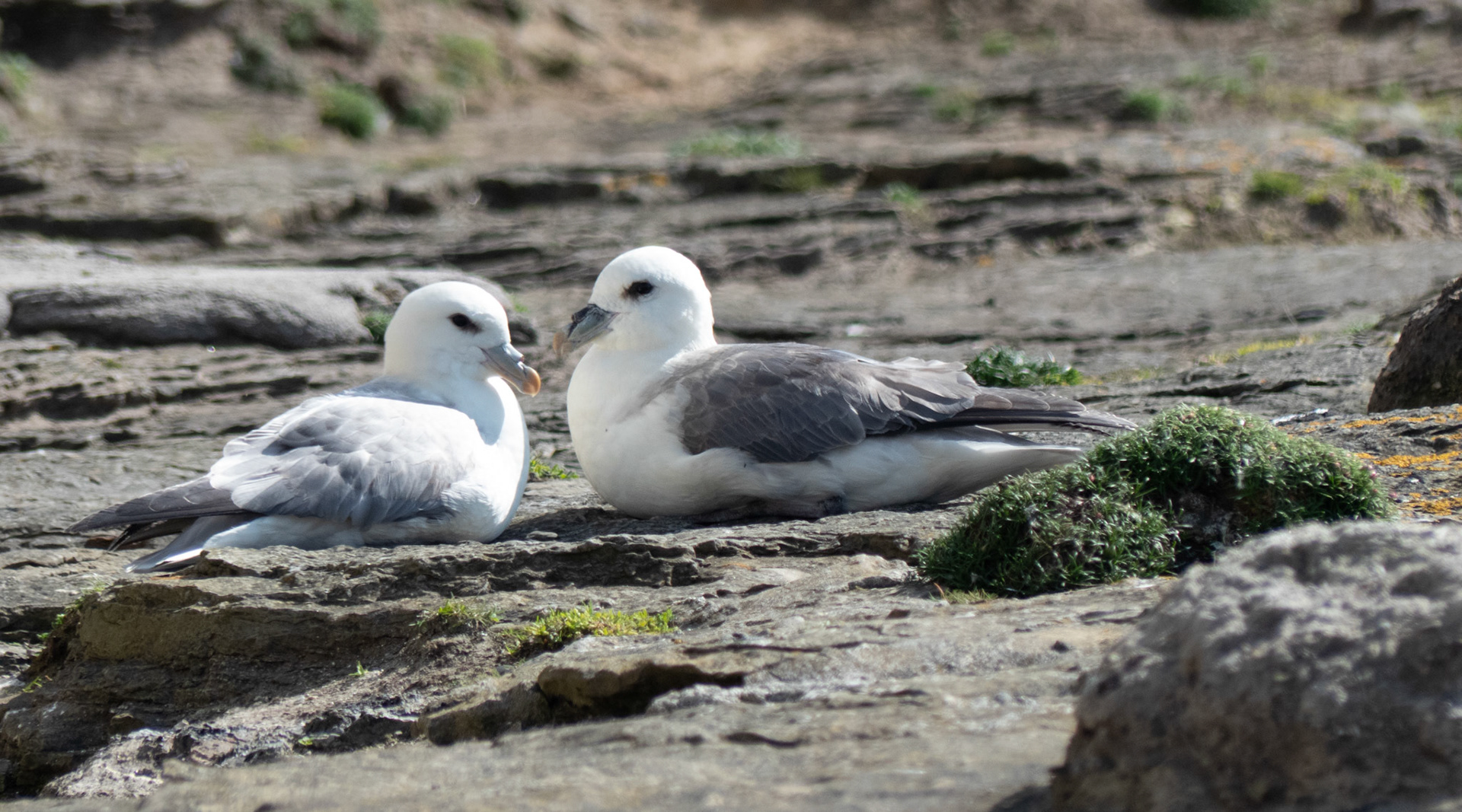
lovebirds
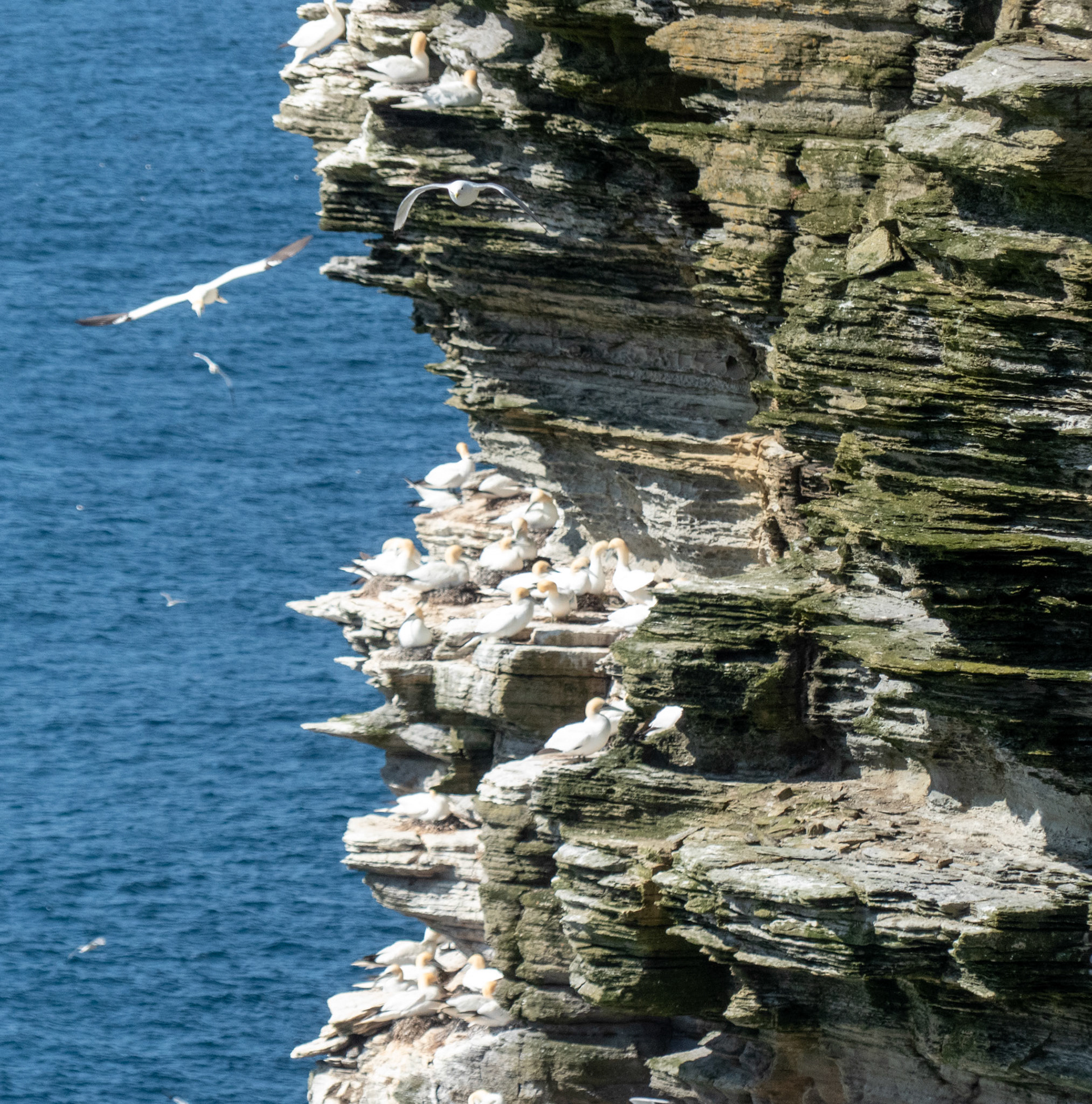
colonies of gannets
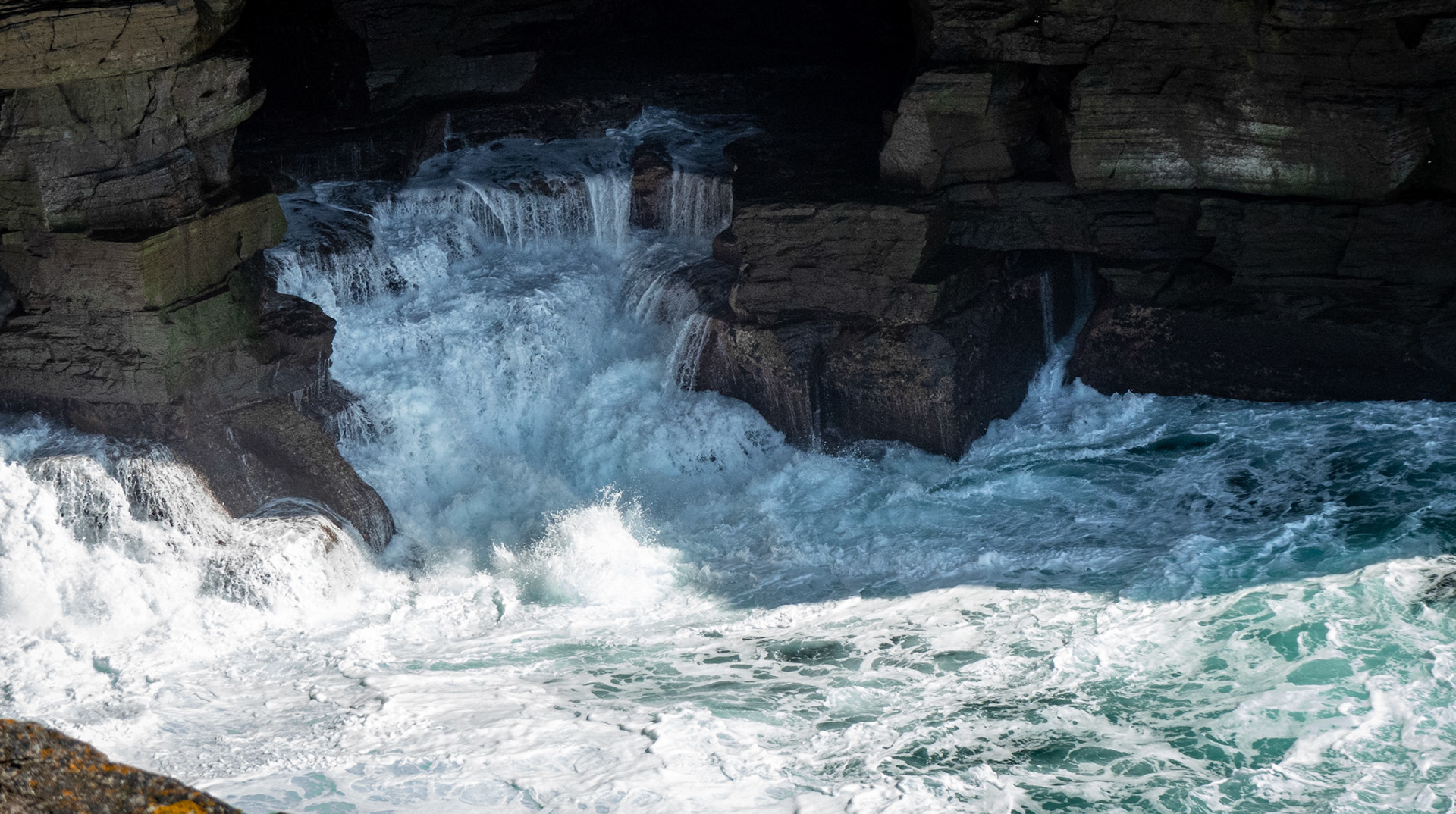
immeasurable power of the sea
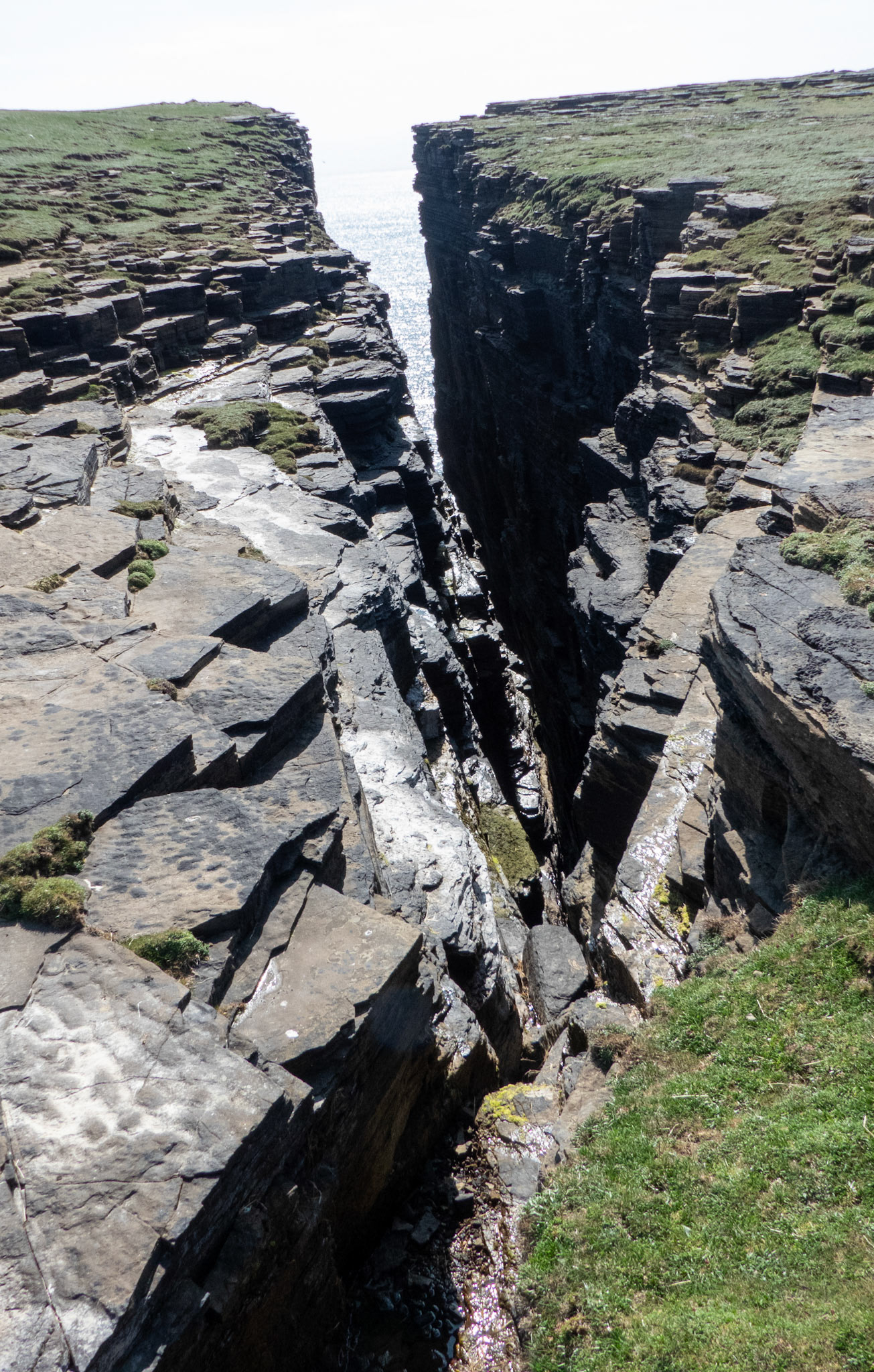
rock fissure

unusual view of a lighthouse

Noup Lighthouse
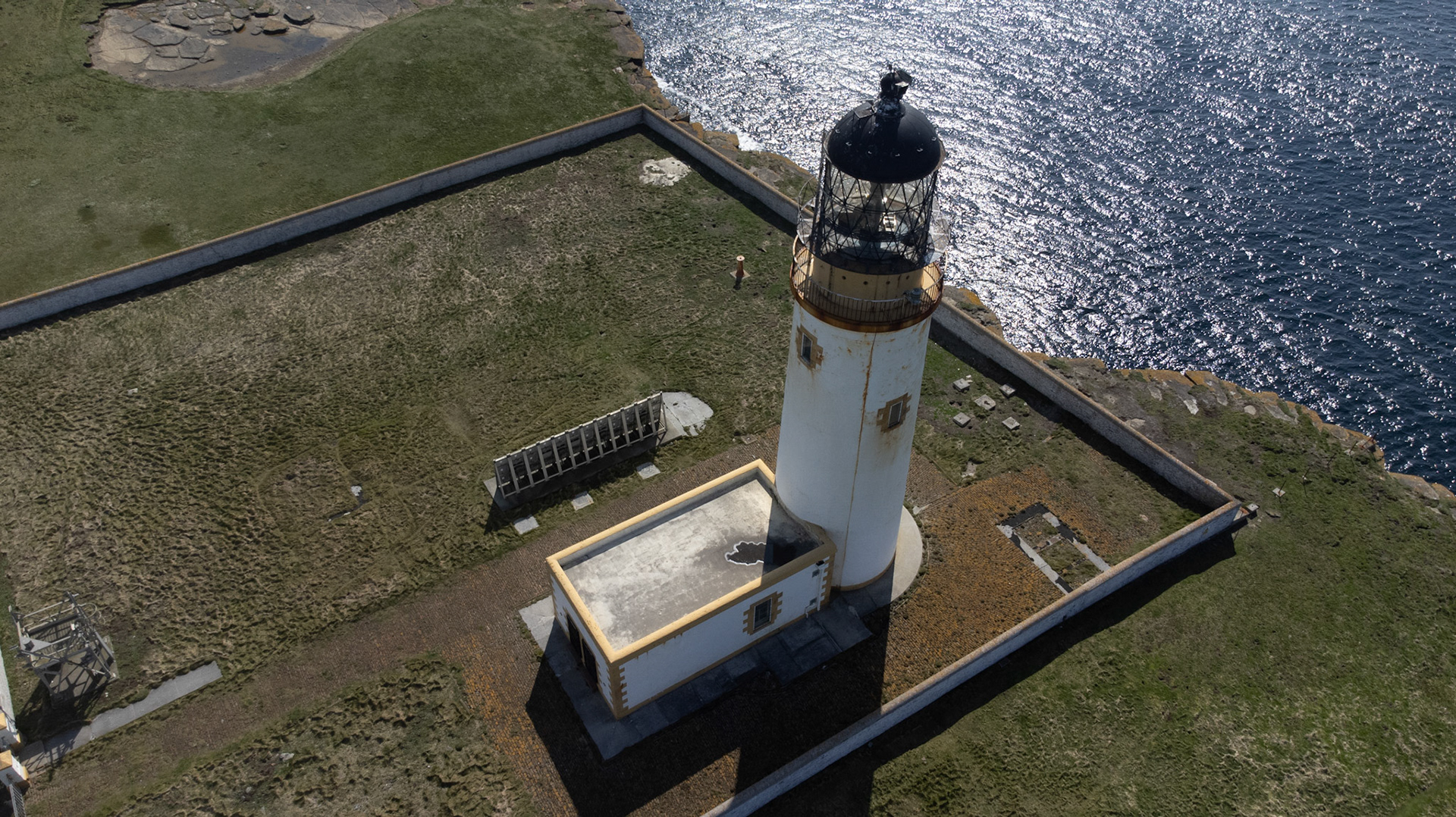
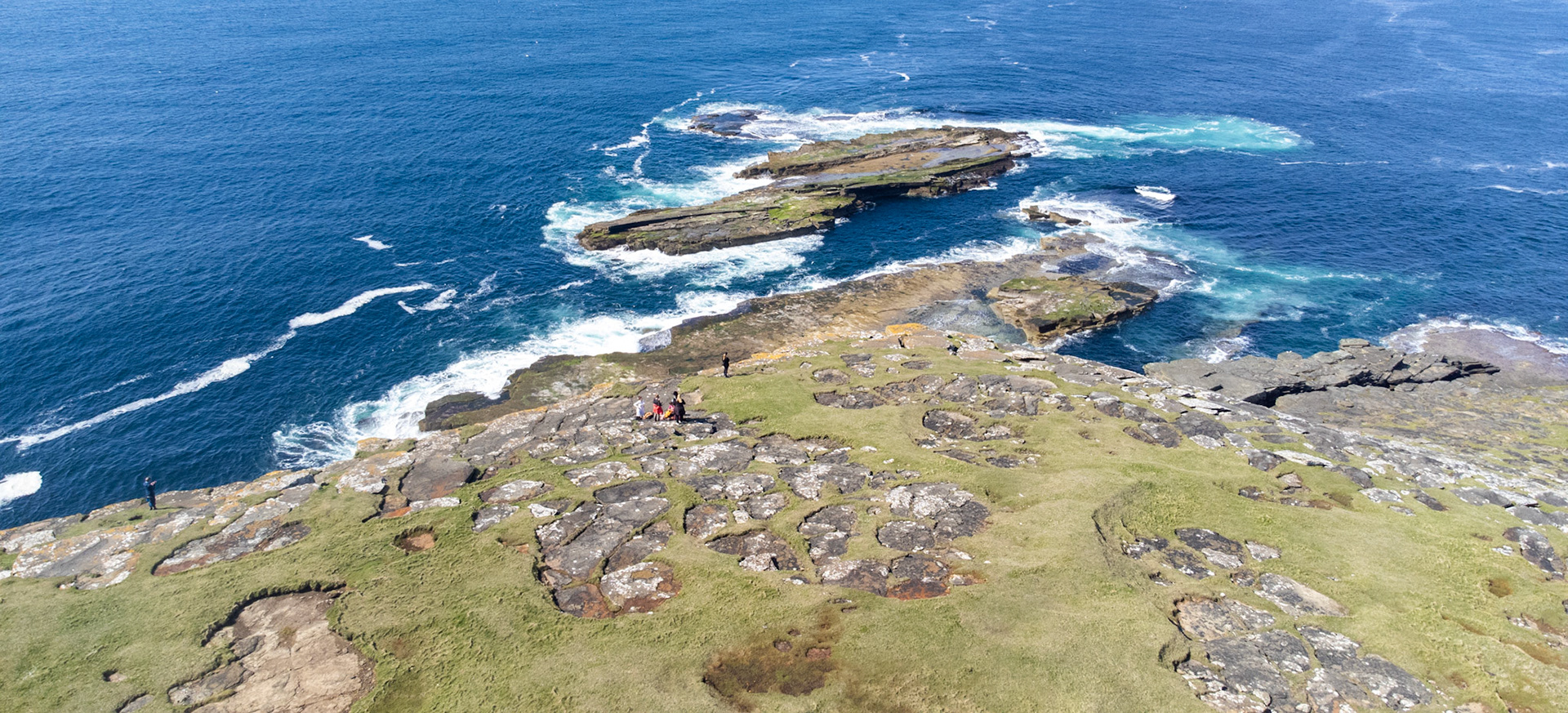
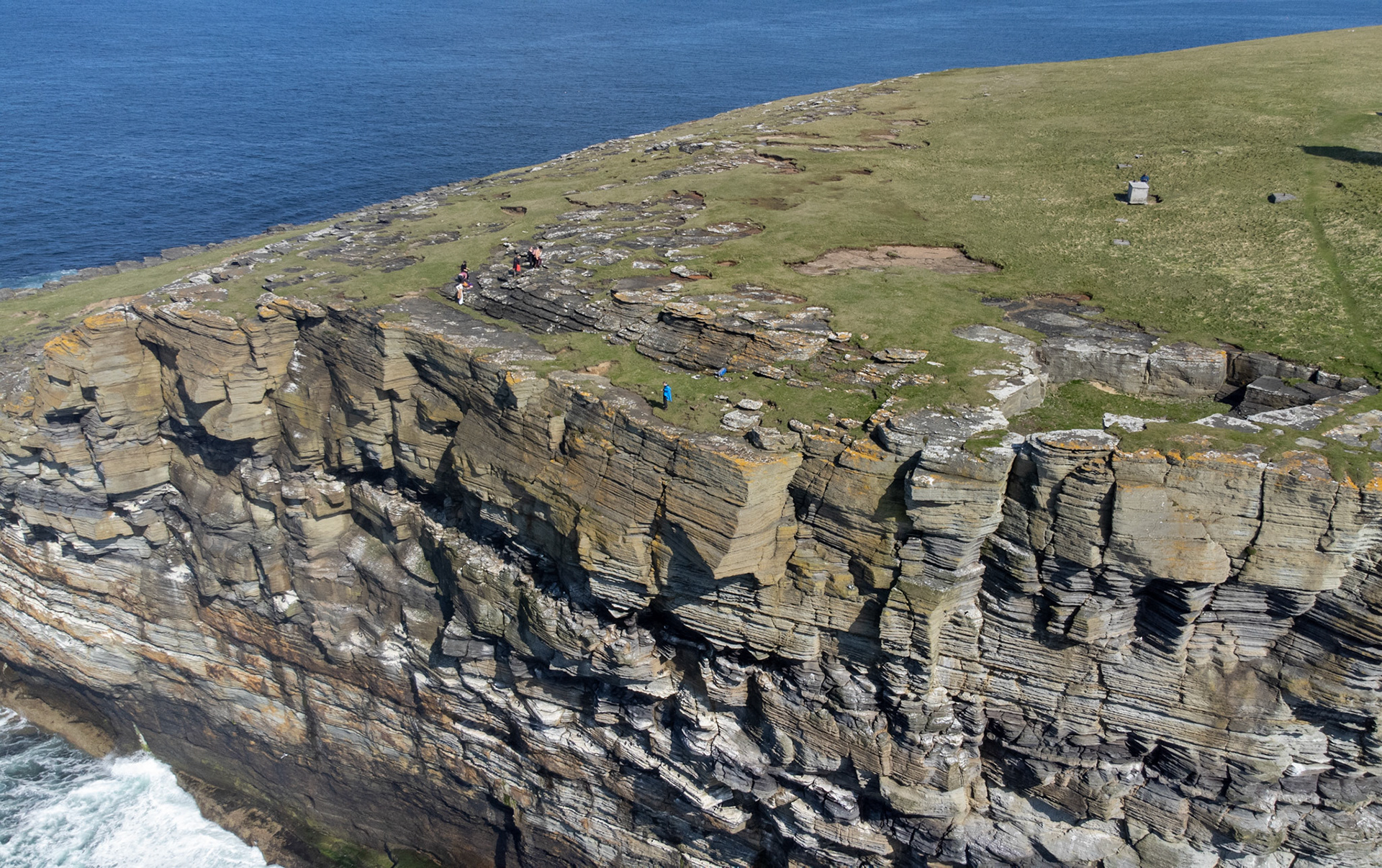
Ali in the blue
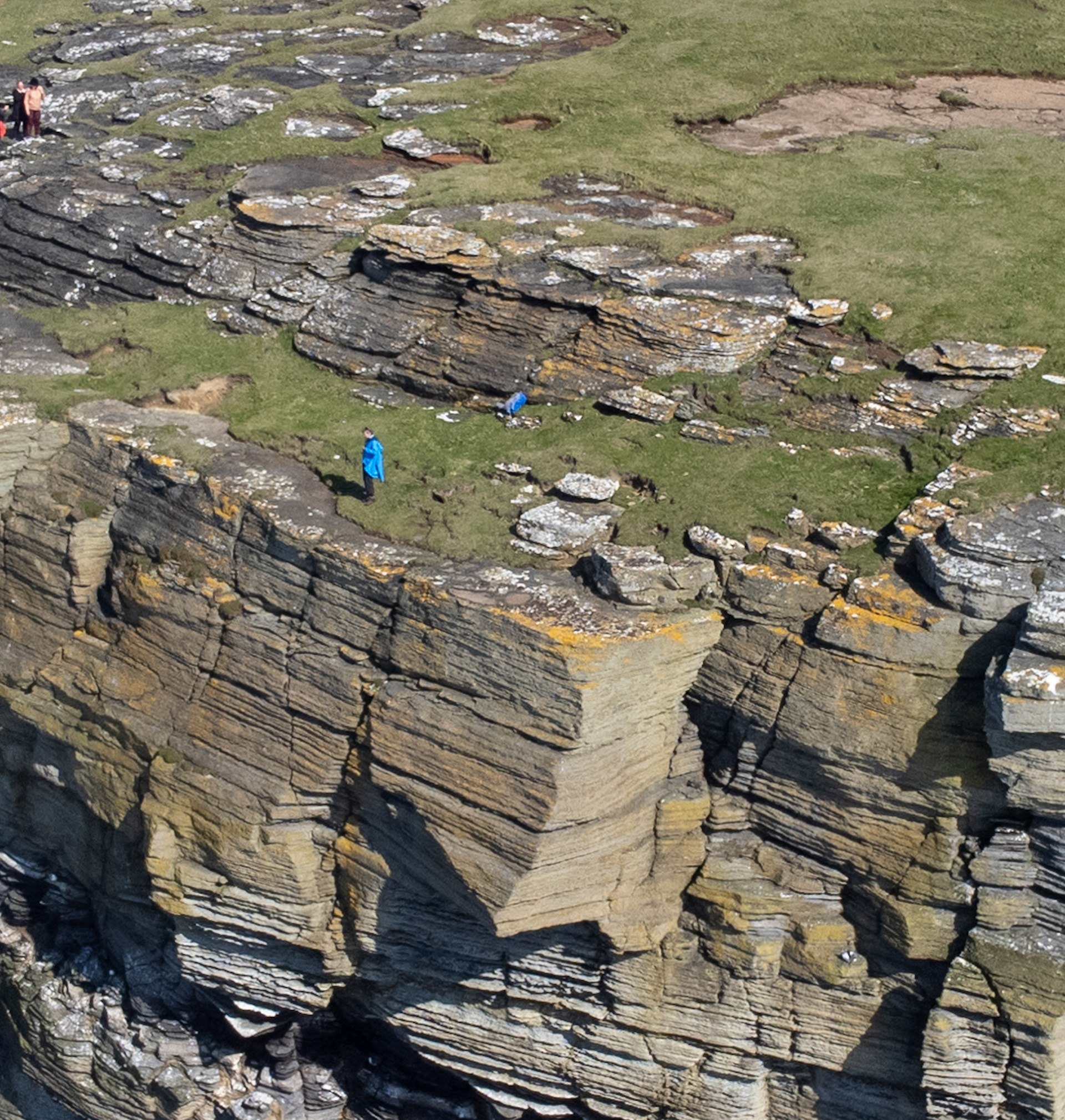
ooooh that's close

whimbrel in pierowall


borough head
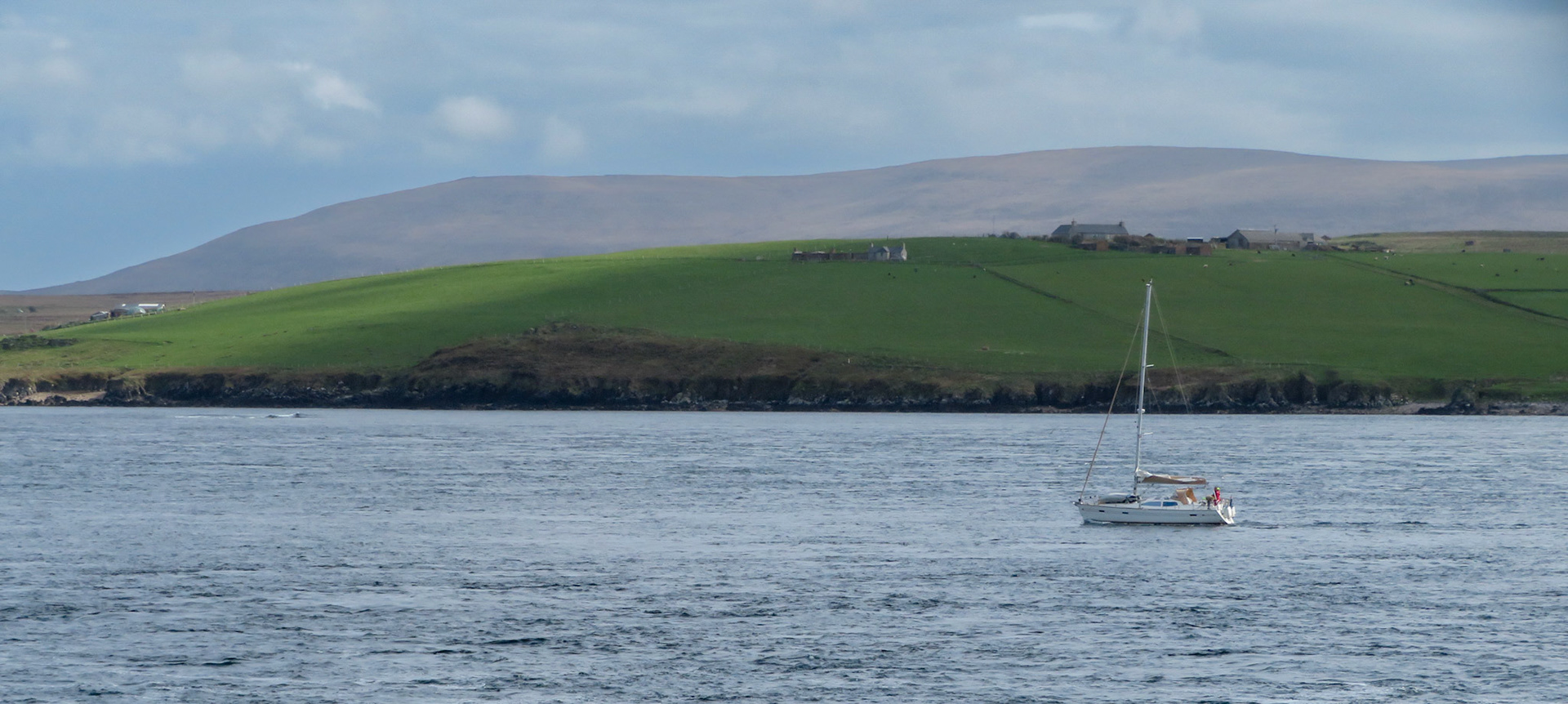
phew got the hoy sound tide right!
We had a cracking sail back to Stromness but not before we had encountered a huge swell in the Sound of Westray, waves of around 8mtres and some at very short intervals plagued our first hour in the Sound but thankfully no breaking overfalls as we had steered clear of the roosts and got our tide times correct. Rounding the headland of mainland and witnessing the impressive rock formations that we had missed on the way up due to the fog gave us a splendid afternoons sail. Reaching Hoy Sound as the tide turned meant we had a fast and uneventful passage through the Sound and turned into Stromness…just as the ferry was heading out! Being larger than us we gave it full clearance and received a friendly acknowledgement from the Captain.
We stayed in Stromness for a few more days and visited both the Scapa Flow Museum and walked across the Churchill Barriers that links the Mainland to South Ronaldsay.
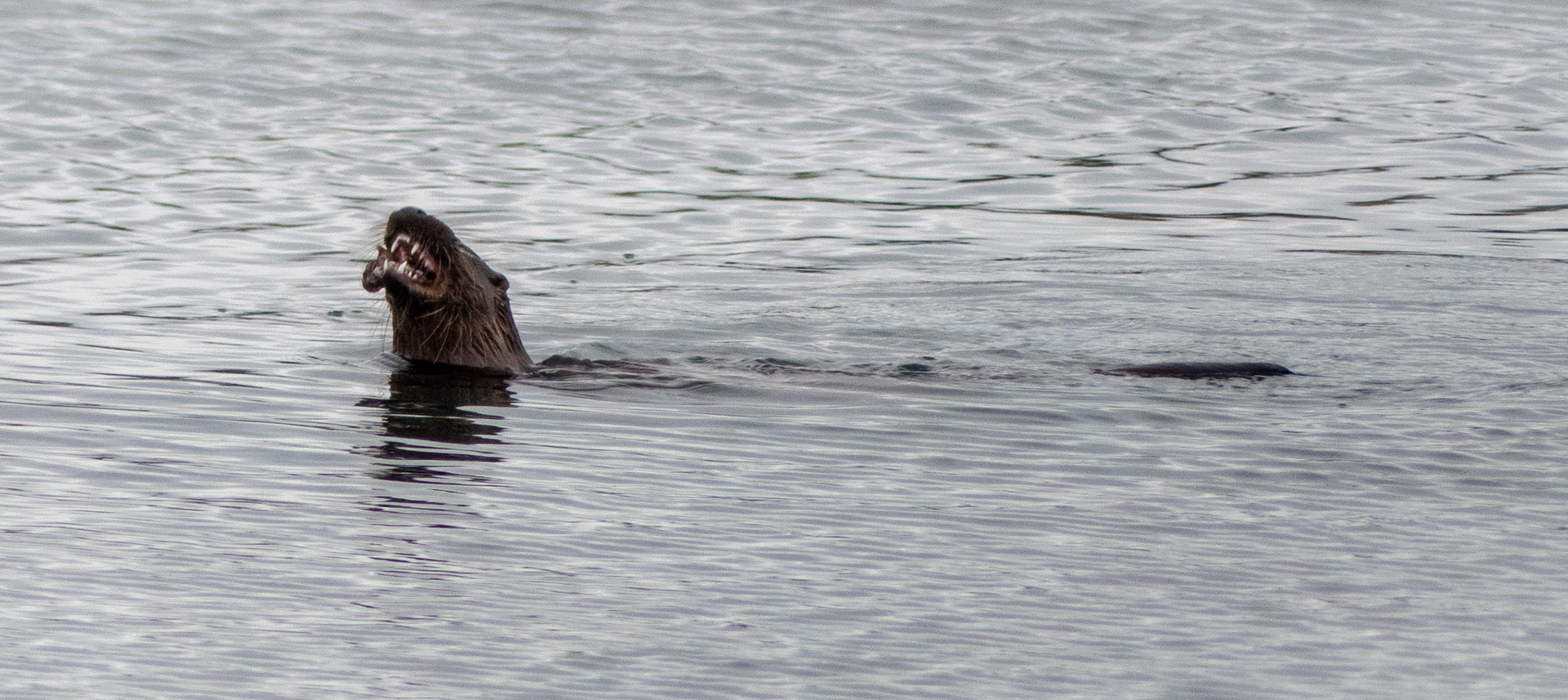
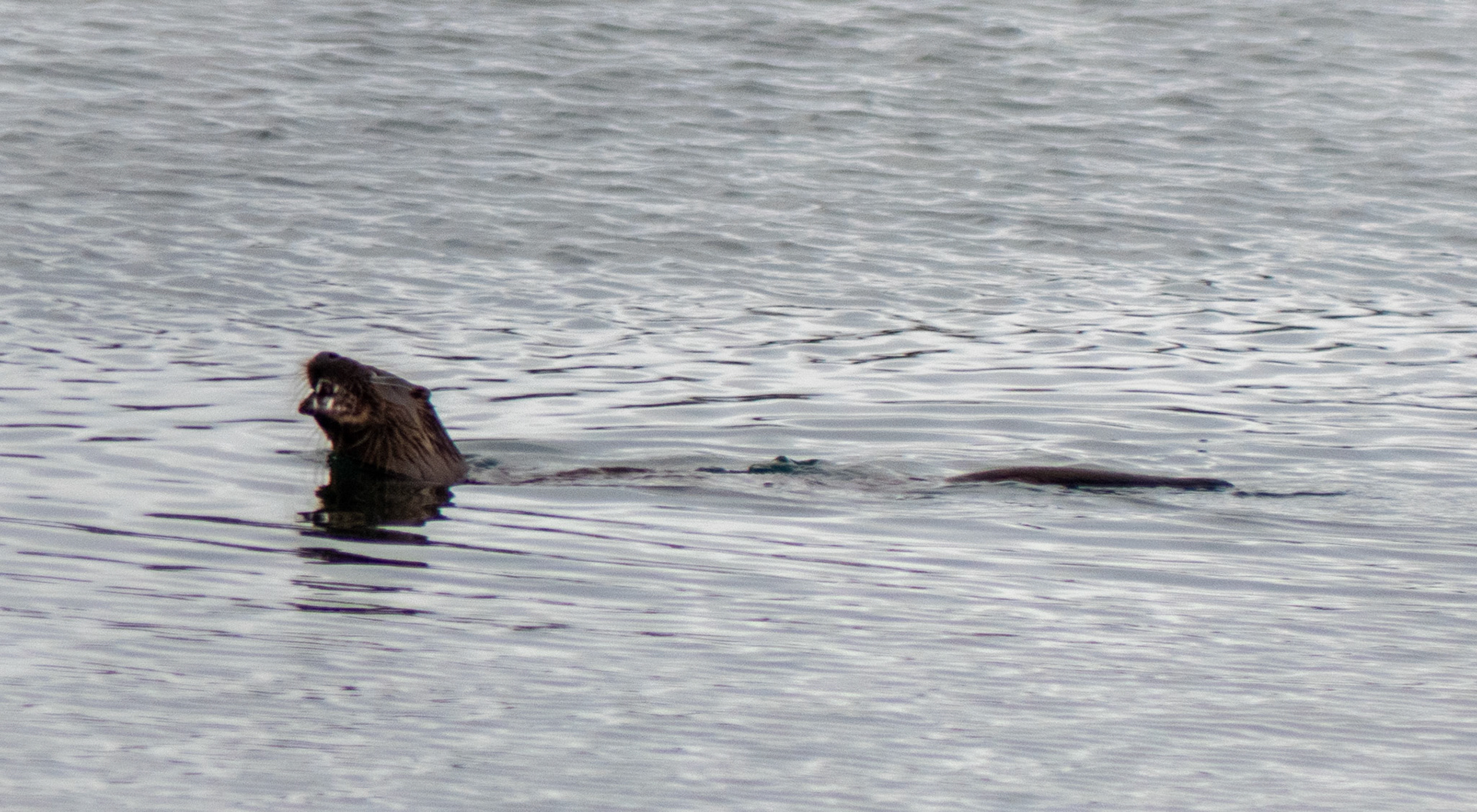
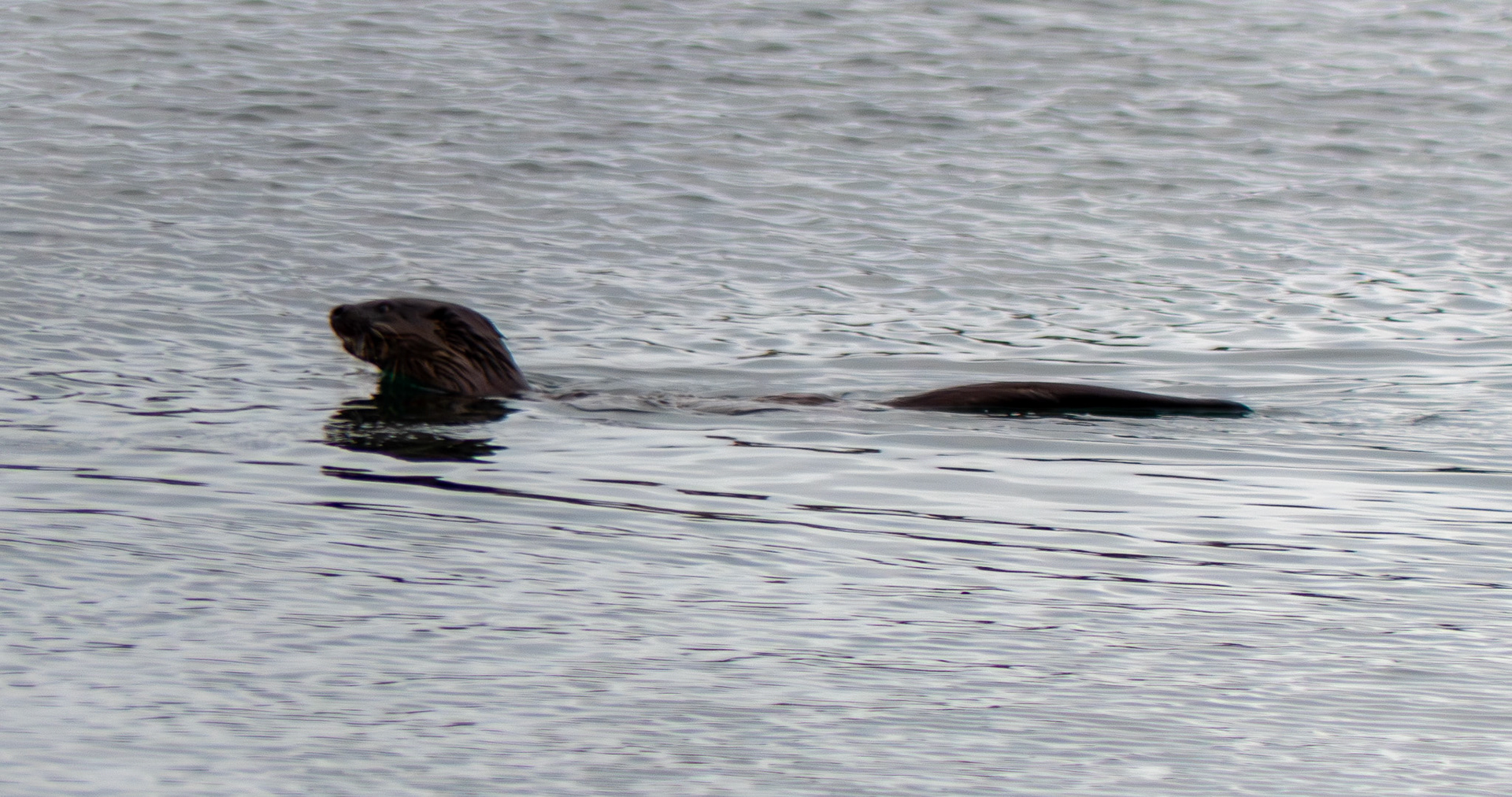
There are so many moving stories in the Scapa Flow Museum it is hard to record them all here so a visit is a must. A couple that cannot be ignored - In the first world war HMS Vanguard a battle cruiser was moored in Scapa Flow but blew up due to unstable cordite with the loss of 845 lives. Such a tragic loss. And of course there is the historical Battle of Jutland causing much loss of shipping and men (6000 British) on both sides. Both sides claimed a victory from this encounter but in reality the ability of the British Fleet to maintain their blockade of the German Fleet and protect the supply routes across the North Sea meant in hindsight that the British Fleet won the day.
The Churchill Barriers were built at the behest of Churchill after a German UBoat U47 snuck in past the block ships guarding the gaps between the islands and torpedoed HMS Royal Oak with the loss of 835 lives. There were only 3 survivors, one of whom died of his wounds a few days later. There is a beautiful memorial to the men in Kirkwall Cathedral at which we paid our respects on our return journey.
This was a bit of a pilgrimage for us as so many of our predecessors in the Royal Navy had lost their lives defending our shores during both the first world and second world wars. Their names are remembered in the Naval Cemetery there and in the stories told by those who survived. Lyness Harbour where the museum is housed became a major naval base during WWII contributing ammunitions fuel, stores a safe haven for crew changes and communications that helped protect the Atlantic Convoys.
One of the happier stories to come from this time is from the building of The Italian Chapel on Lamb Holm, one of the tiny islands connected to mainland by the Churchill Barriers. It is a beautiful monument to peace and reconciliation. Designed and built by Italian Prisoners of War from North Africa in 1942, it has become an enduring icon gracing this tiny island. It was constructed from 2 army Nissan huts and the artwork inside the building was done by Domenico Chiocchetti, a talented religious artist from Moena in Northern Italy. He used a small prayer card his mother sent him as his inspiration for the Madonna and Child above the altar. Every aspect of the decoration depicts peace and love. He was assisted by his fellow prisoners of war and incredibly, apart from the paint on the walls which the men saved up and paid for everything else was salvaged from the 1st WW sunken blockships around the island. The chapel has been renovated twice and is looked after by the Italian Chapel Preservation Committee, Orkney. Many of the POWs have returned to Orkney over the last 80 years to tread the familiar paths, meet up with the families of those they met and see the work they were paid to do, constructing the Churchill Barriers, as a wonderful structure connecting the islands for the people of Orkney.
The Churchill Barriers were built at the behest of Churchill after a German UBoat U47 snuck in past the block ships guarding the gaps between the islands and torpedoed HMS Royal Oak with the loss of 835 lives. There were only 3 survivors, one of whom died of his wounds a few days later. There is a beautiful memorial to the men in Kirkwall Cathedral at which we paid our respects on our return journey.
This was a bit of a pilgrimage for us as so many of our predecessors in the Royal Navy had lost their lives defending our shores during both the first world and second world wars. Their names are remembered in the Naval Cemetery there and in the stories told by those who survived. Lyness Harbour where the museum is housed became a major naval base during WWII contributing ammunitions fuel, stores a safe haven for crew changes and communications that helped protect the Atlantic Convoys.
One of the happier stories to come from this time is from the building of The Italian Chapel on Lamb Holm, one of the tiny islands connected to mainland by the Churchill Barriers. It is a beautiful monument to peace and reconciliation. Designed and built by Italian Prisoners of War from North Africa in 1942, it has become an enduring icon gracing this tiny island. It was constructed from 2 army Nissan huts and the artwork inside the building was done by Domenico Chiocchetti, a talented religious artist from Moena in Northern Italy. He used a small prayer card his mother sent him as his inspiration for the Madonna and Child above the altar. Every aspect of the decoration depicts peace and love. He was assisted by his fellow prisoners of war and incredibly, apart from the paint on the walls which the men saved up and paid for everything else was salvaged from the 1st WW sunken blockships around the island. The chapel has been renovated twice and is looked after by the Italian Chapel Preservation Committee, Orkney. Many of the POWs have returned to Orkney over the last 80 years to tread the familiar paths, meet up with the families of those they met and see the work they were paid to do, constructing the Churchill Barriers, as a wonderful structure connecting the islands for the people of Orkney.
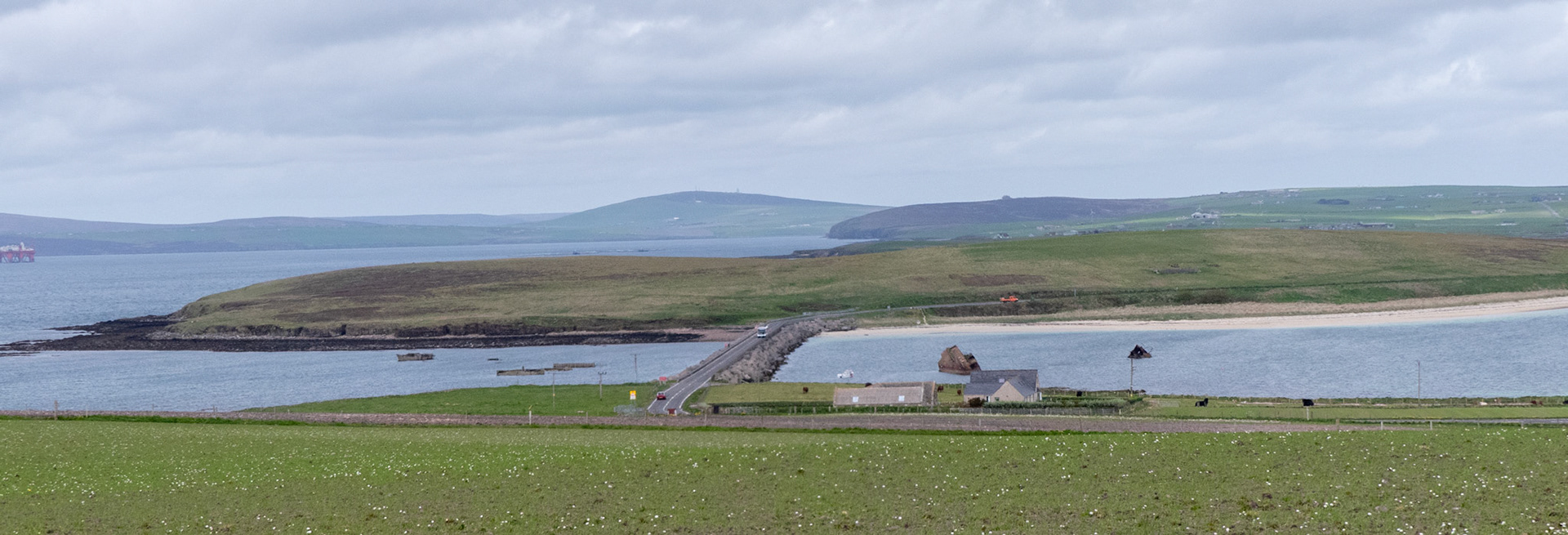
Churchill Barrier with blockships

remains of a WW1 blockship

Italian Chapel
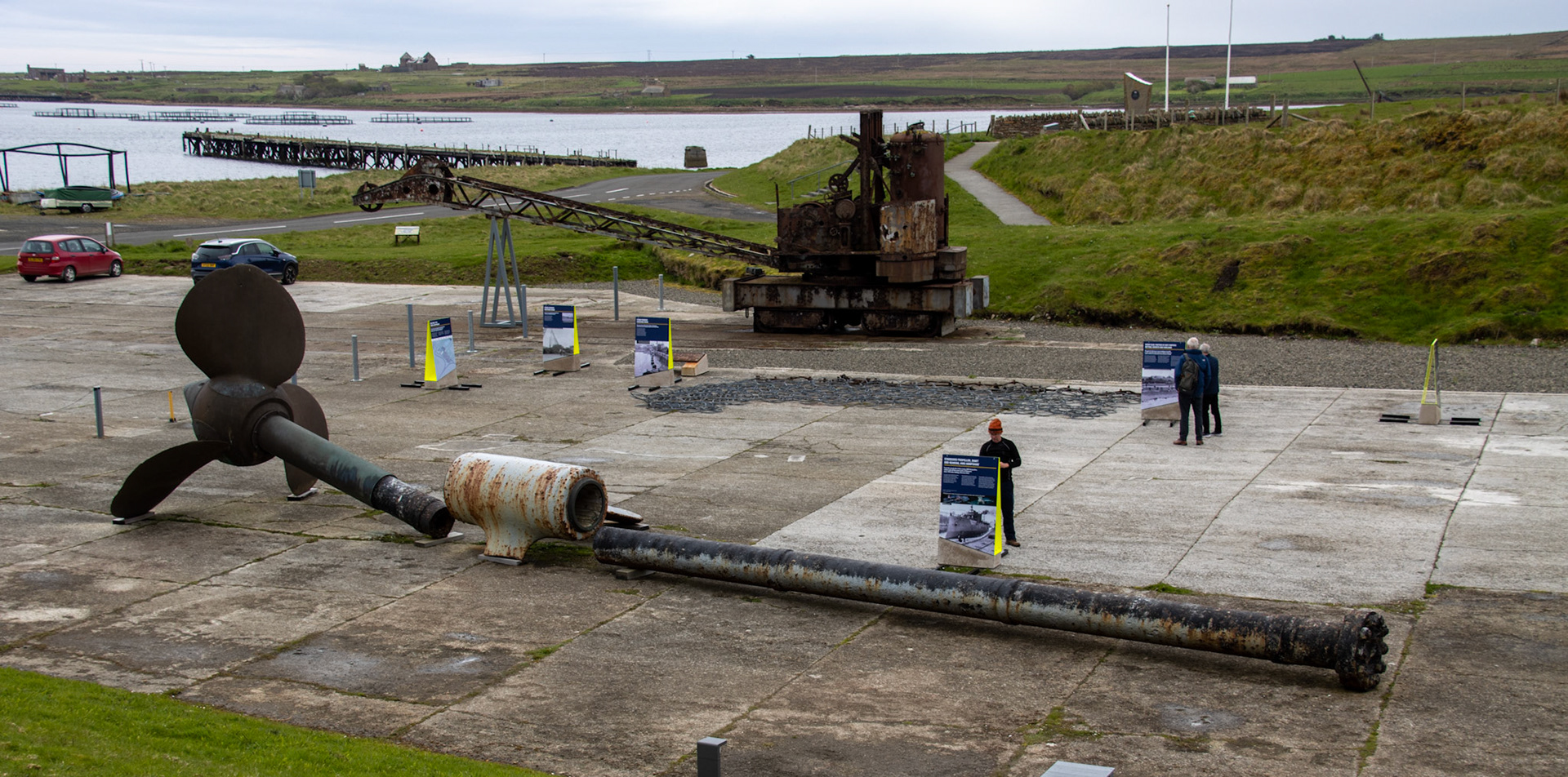
Scapa Flow Museum entrance - prop shaft from HMS hampshire
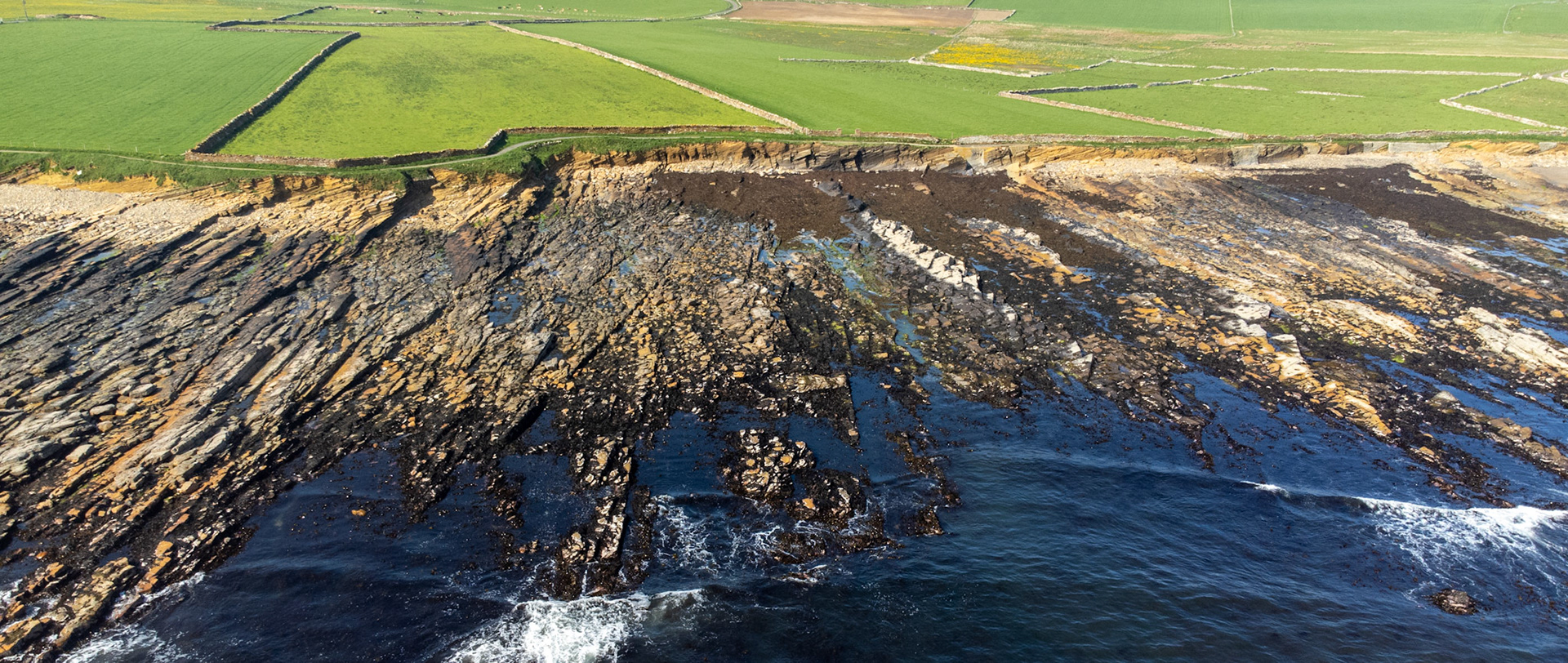
mainland shoreline from hoy sound
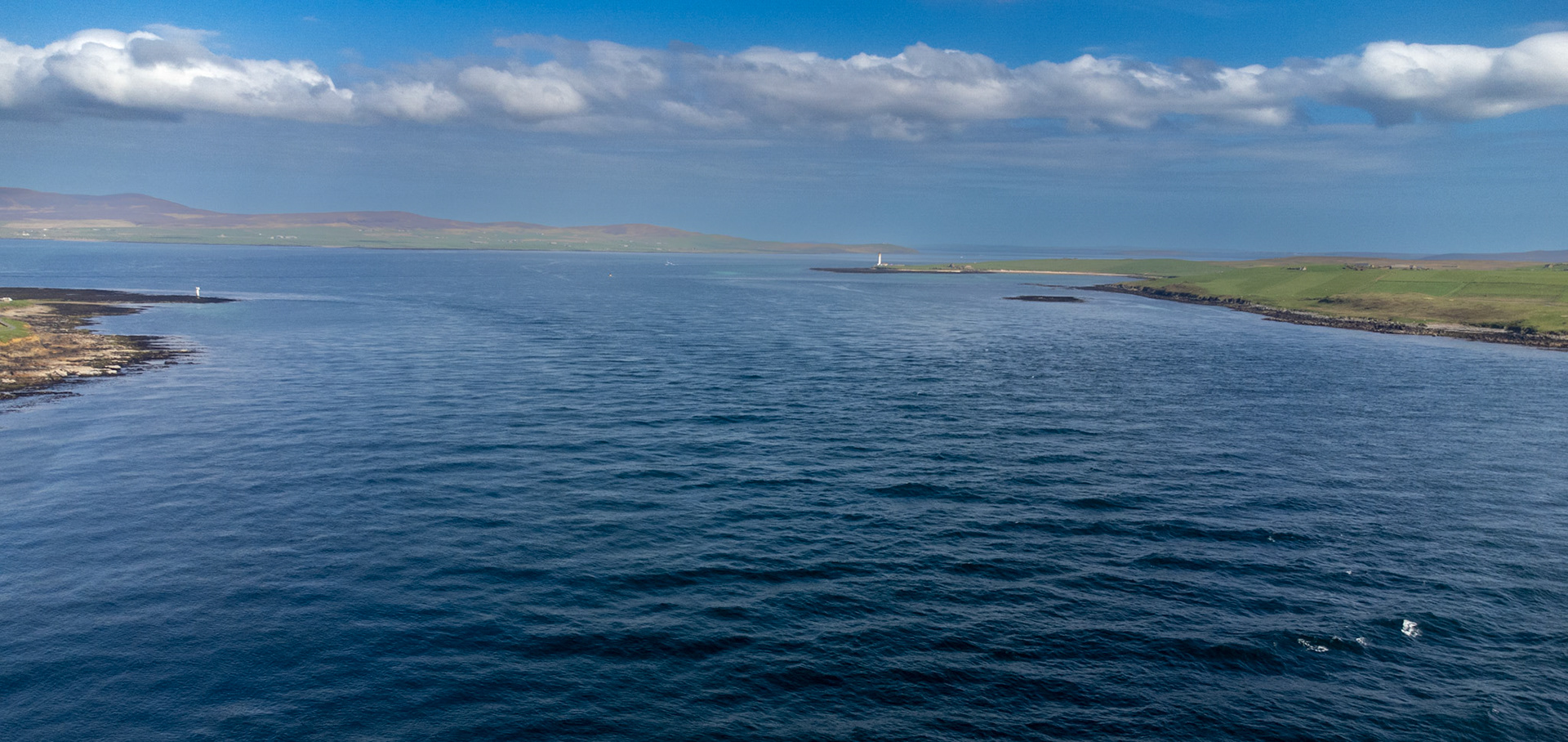
graemsey lighthouse from hoy sound
Our stay in Orkney was coming to an end as we had a fairly tight weather window before the next set of lows and high winds took charge. We planned our route to round Cape Wrath, checked our times, watched the weather and departed on 20 May for Loch Eribol. A stop en route to the Cape. The weather was fine and we made good time initially. Then the wind shifted, our mainsail was used to steady our progress in increasingly lumpy swells and we battled in the rain and headwind towards Eribol at a devastatingly low 2.5kts. Realising at 1900 that we were not going to be able to reach this loch in daylight and find a safe anchorage we changed tactics and headed due South for Kyle of Tongue our planned bolt hole if the weather proved poor. It was a sound decision. The swell came onto the nose giving us a much easier motion and rolling in the headsail gave us a good speed toward an anchorage we had chosen – Talmine in Kyle of Tongue. The rain eased and nosing our way through the rocks and islands of the kyle we dropped our anchor with great relief in the sandy bay of Talmine at 2030. The holding was good, supper was served and we planned the next days sail to round the Cape in light winds, our weather window was still there.
1130 saw us depart Talmine heading due north before easing into the early tide to carry us west round the Cape. The swells were still big but there were no overfalls and passing only one trawler we rounded the cape in quite benign conditions. The scenery was awesome, the rocks and thrashing seas and many seabirds gave us plenty to look at in the last 2 hours sail towards Kinlochbervie. Finding the entrance in the grey skies proved an interesting challenge but thankfully in the distance a pointy hilltop gave us a clear steering point. The rocks looked impenetrable and the swell had now reached (for us) epic proportions of around 20-30 ft. A yacht following us in towards the harbour lost us completely in the swell and we turned a few time to see just the top of his mast as he slid down the front of the swell and we started to rise up the next one. Exhilarating. We found the entrance, thrashing white water and rocks within 5 mtrs led us into the entrance of Loch Inchard and very shortly to Kinlochbervie. It was an oasis of calm and we tied up – the first visitor on the pontoon and turned to watch our fellow sailors come through the washing machine.
As we needed to order and replace our water pump and accumulator we ended up staying for a week in this interesting working harbour. Enormous fishing vessels with 40,000 tonnes capacity and fuel tanks that hold 44 000 litres came and went emptying their pre-sold fish into freezer lorries to be taken elsewhere. However we got chatting to the local fish guys and low and behold some freshly caught langoustine became available and a gift from the harbour master of the freshest and firmest haddock fillets really made our stay so special.
Planning to start the trip South tomorrow Sunday 28th May, hoping for warmer days and softer winds.
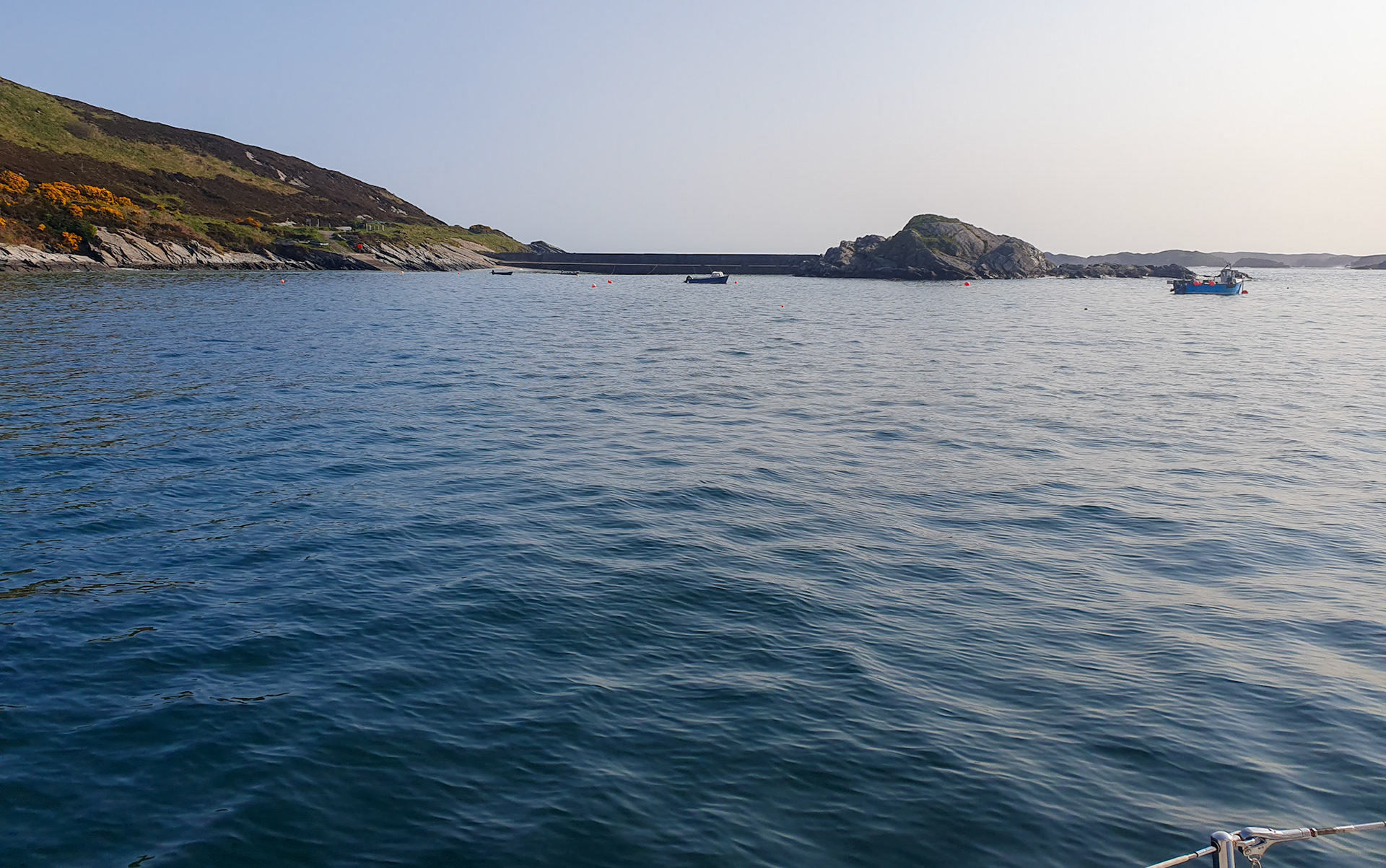
Talmine Bay looking north
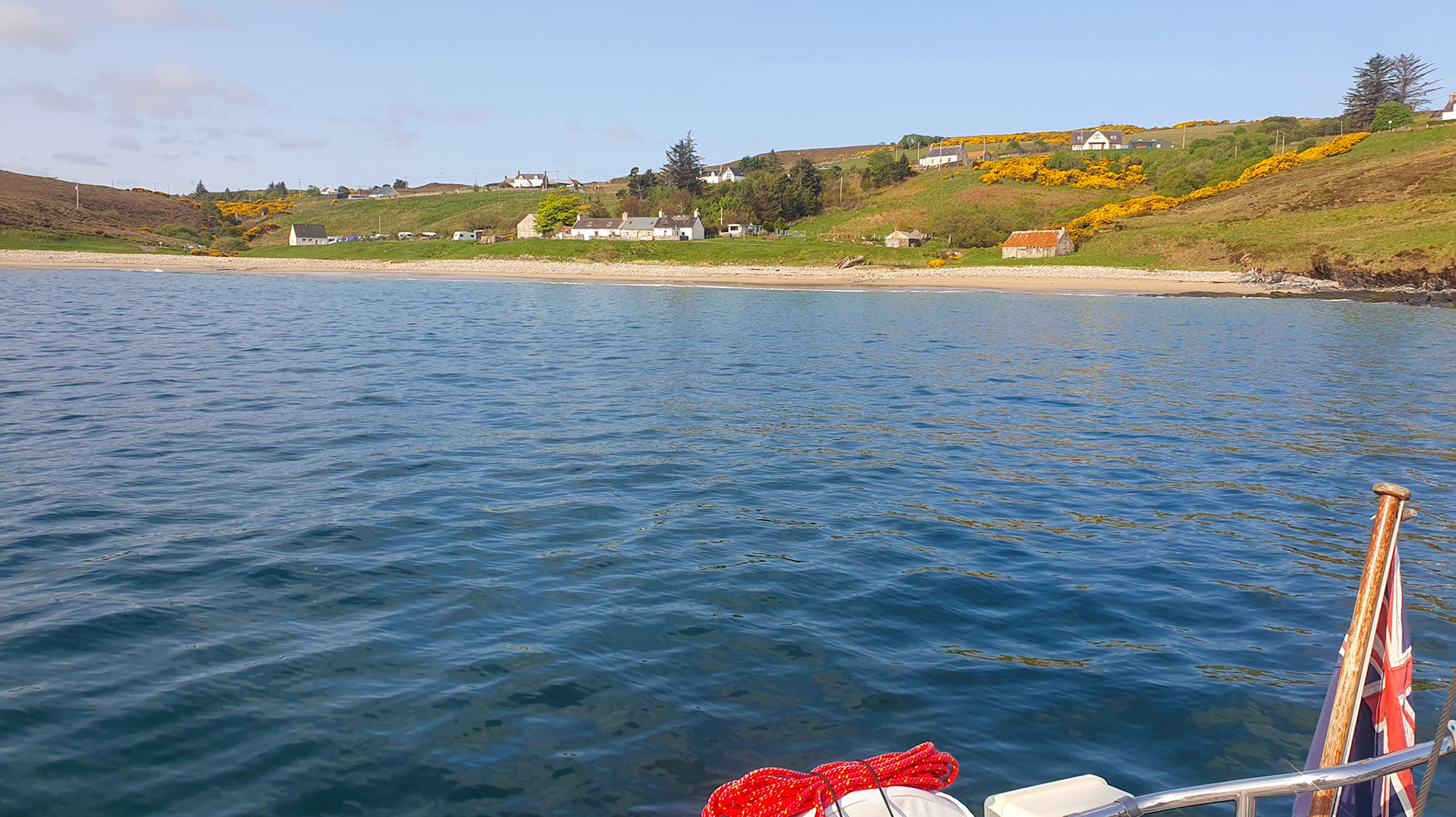
talmine beach
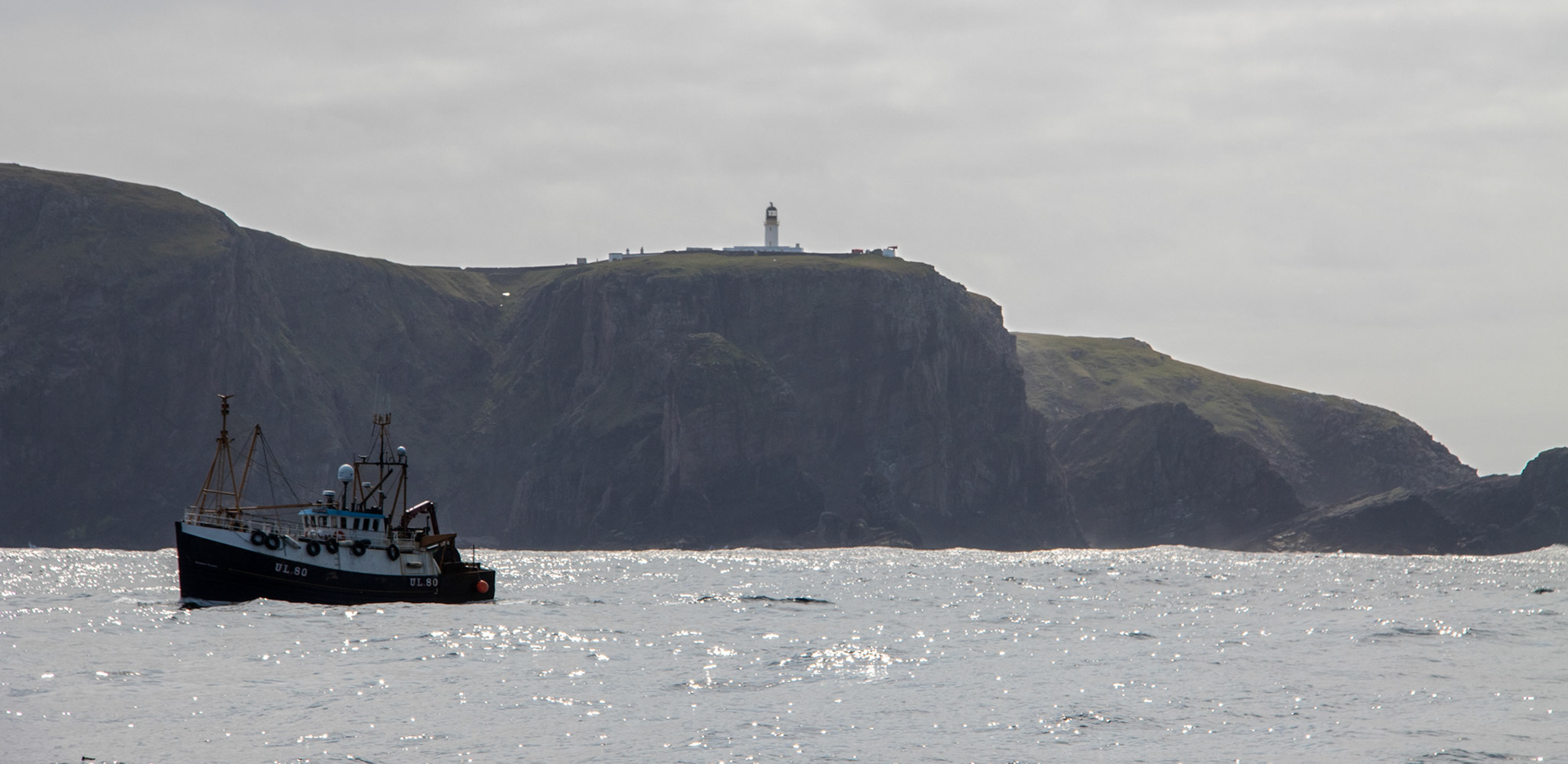
Cape Wrath looking south
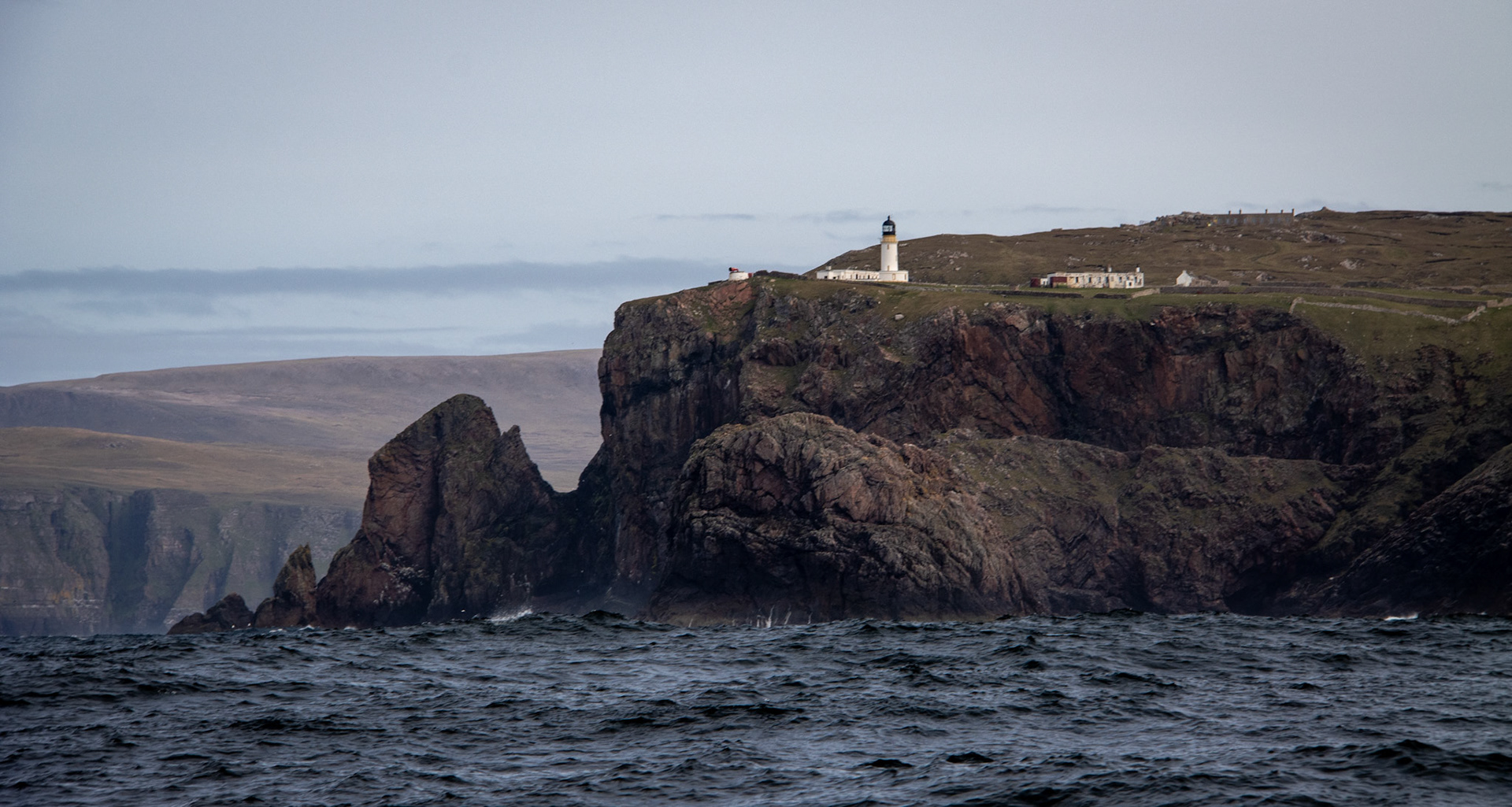
cape wrath....rounded
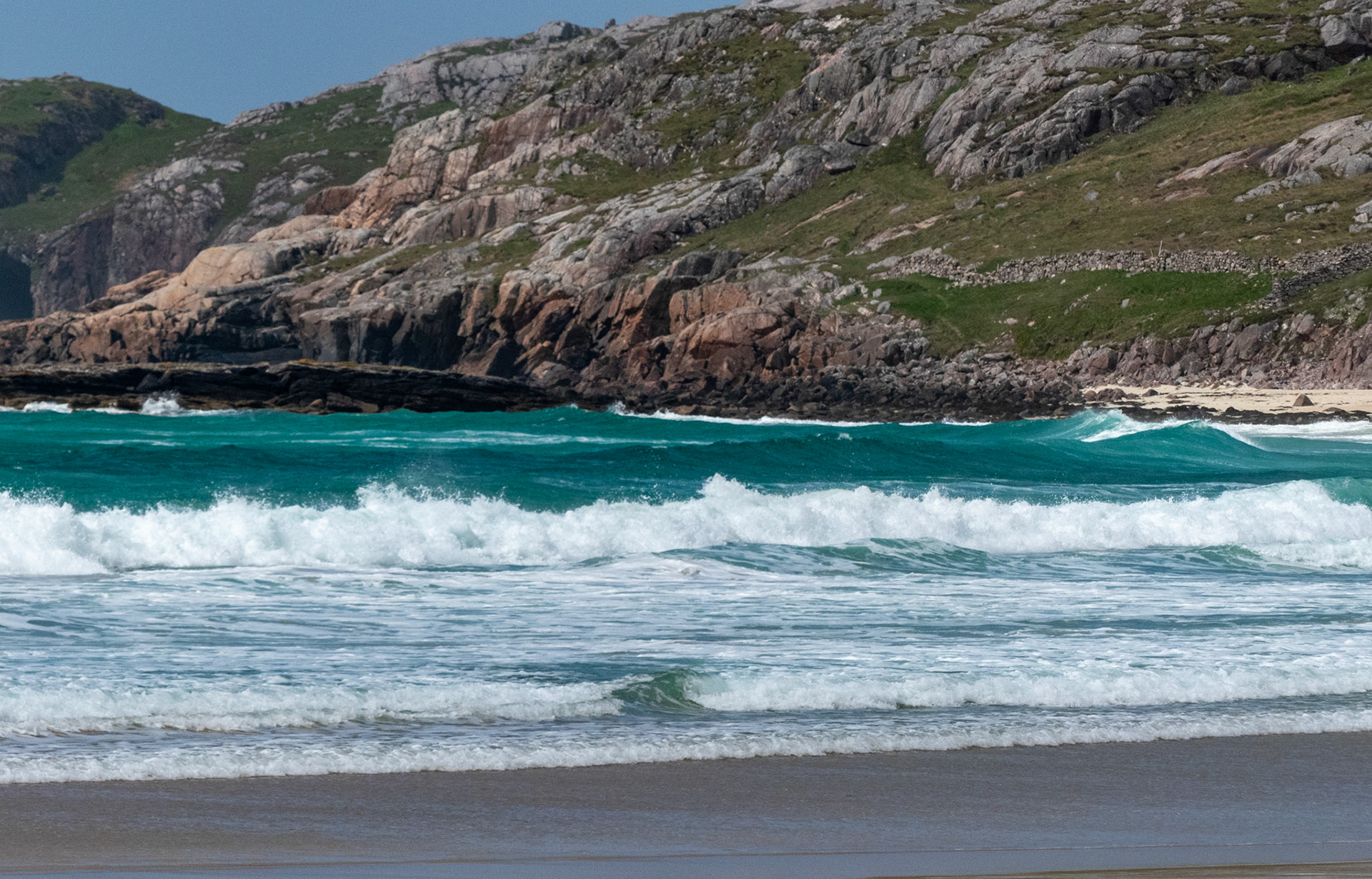
oldshoremore beach
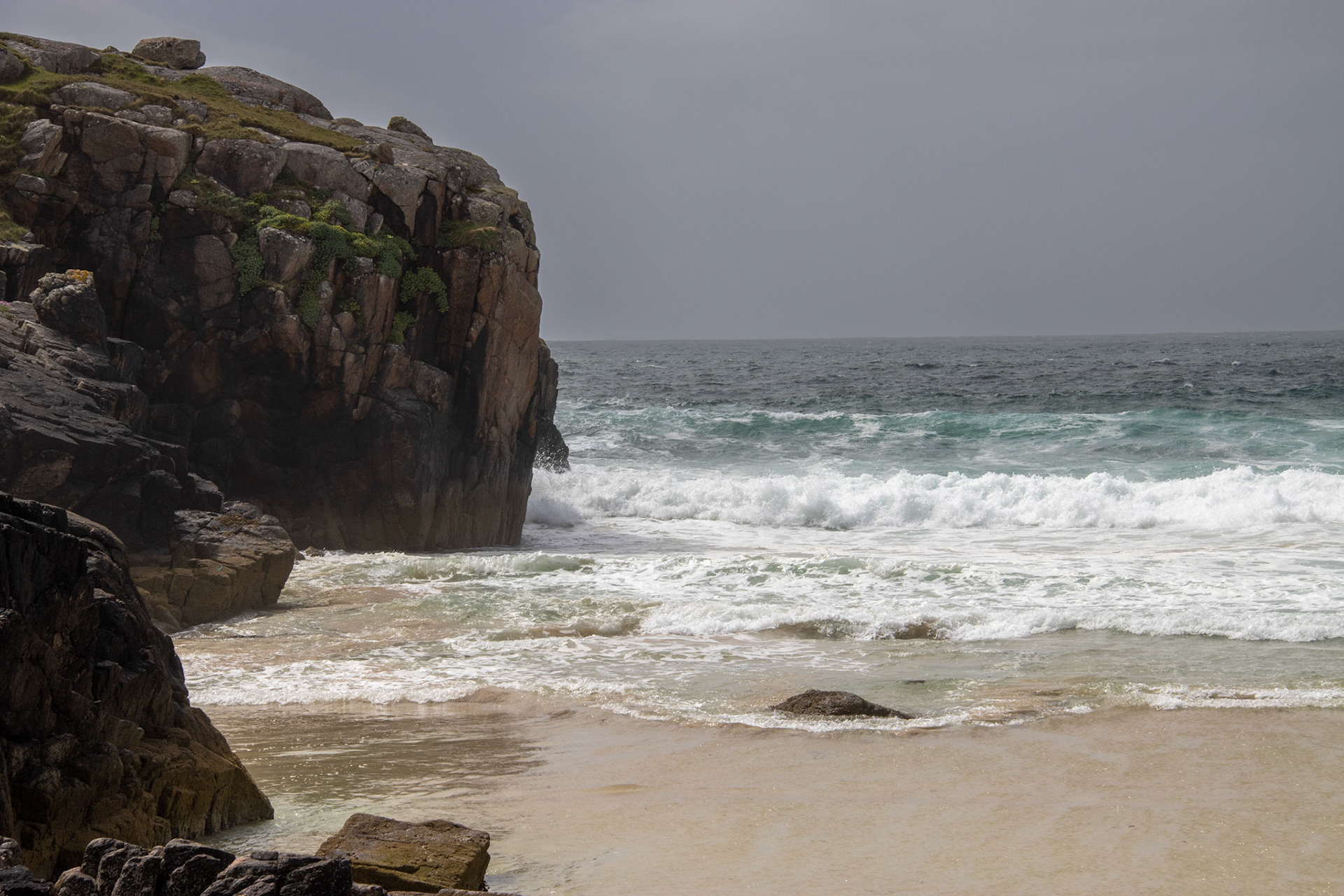
still rough
